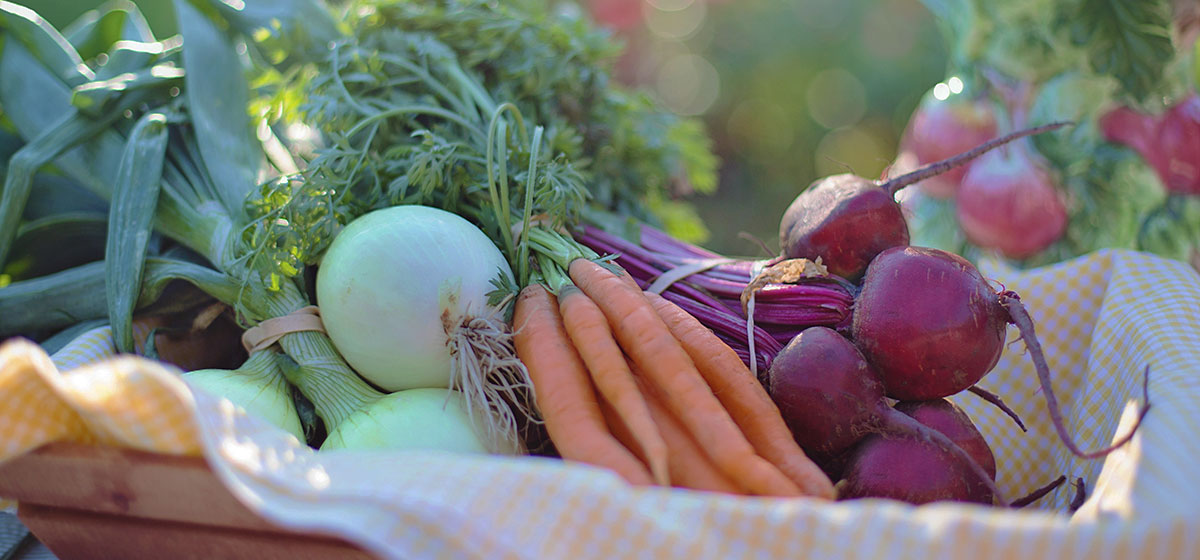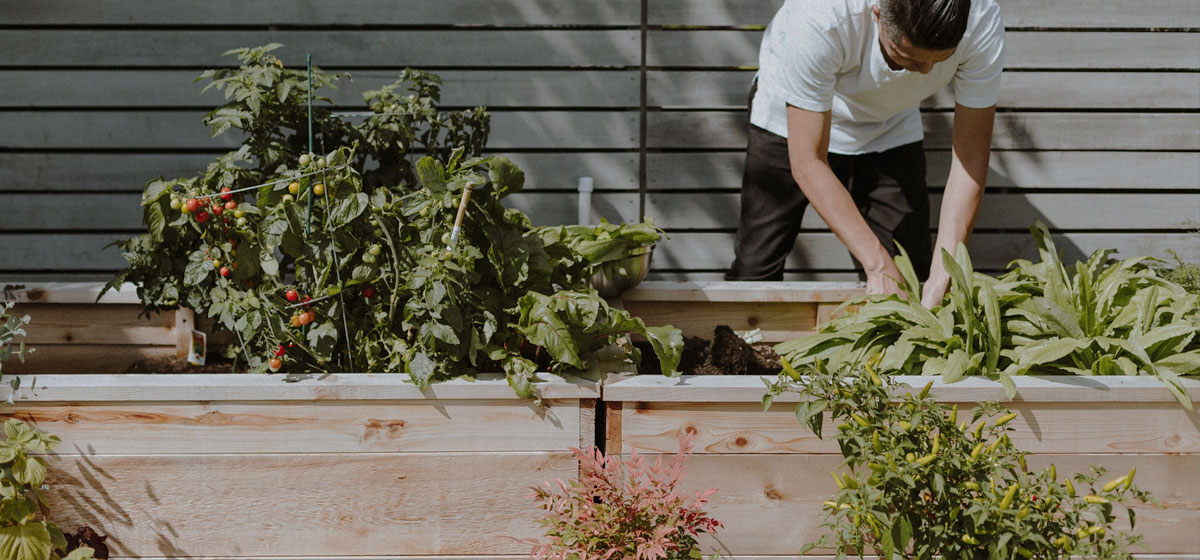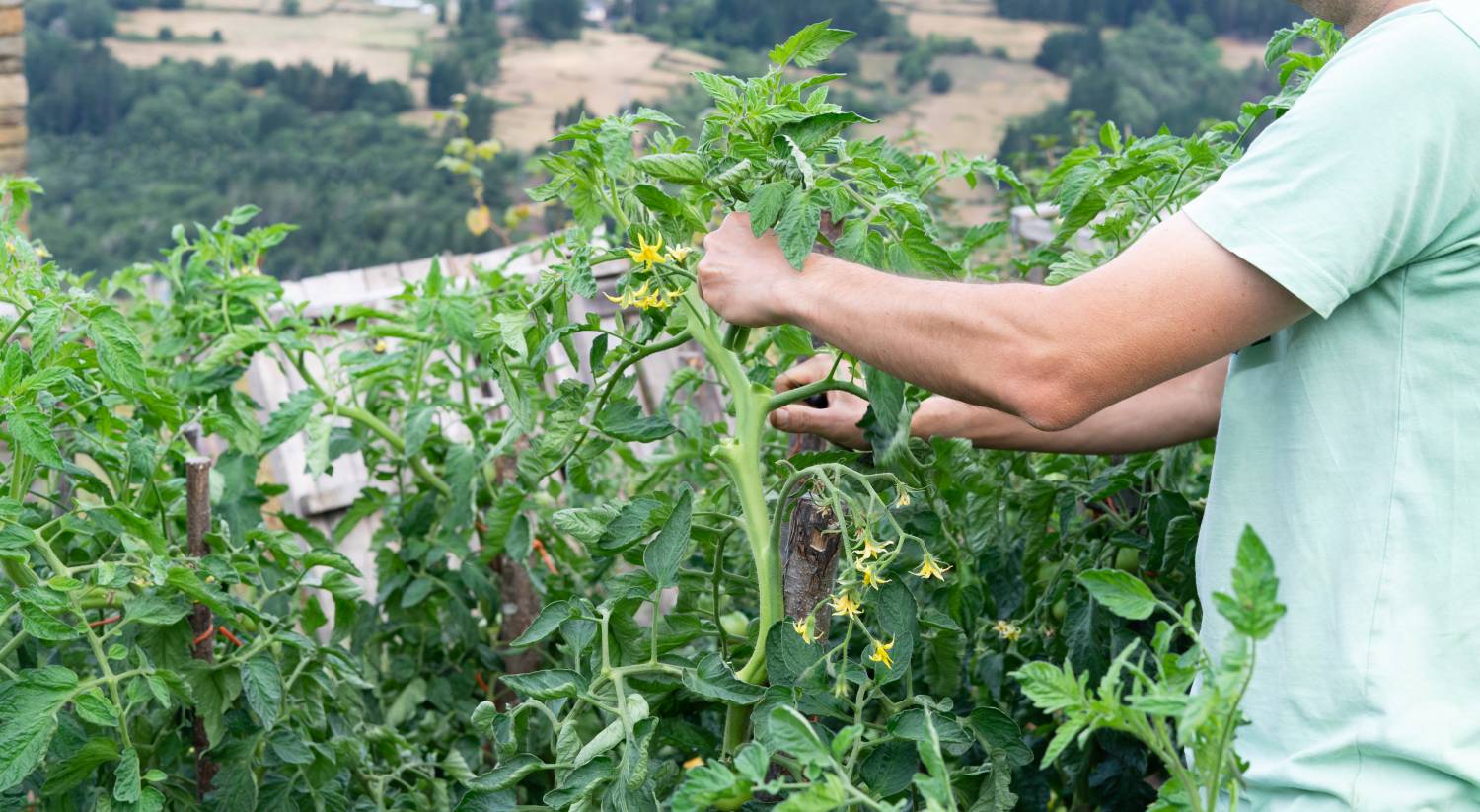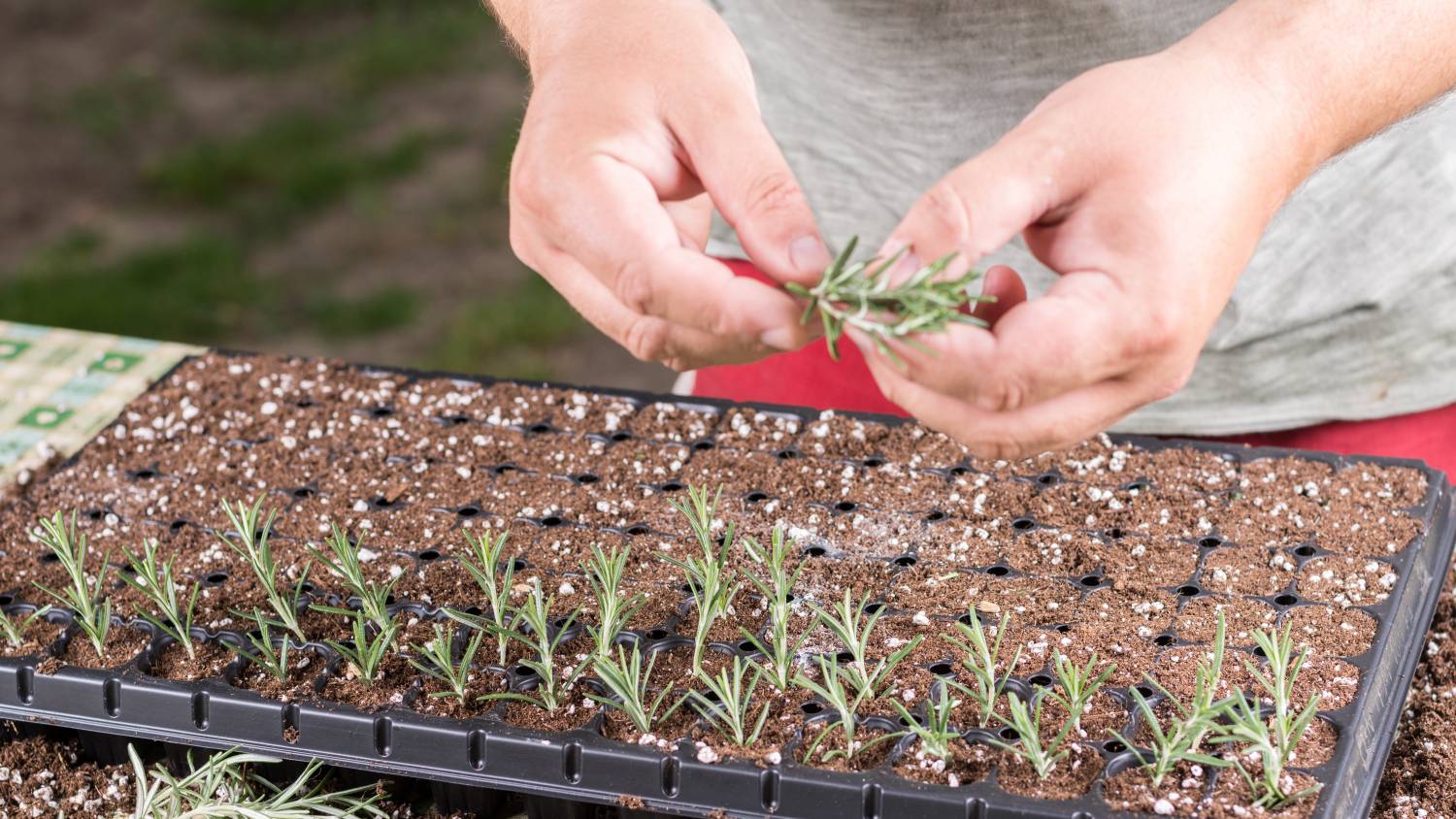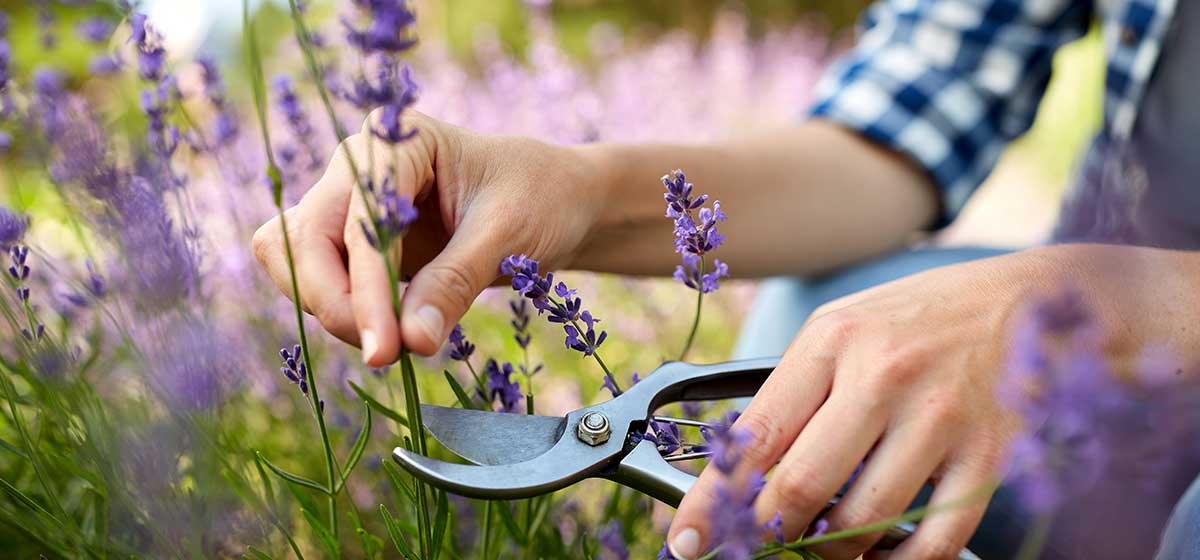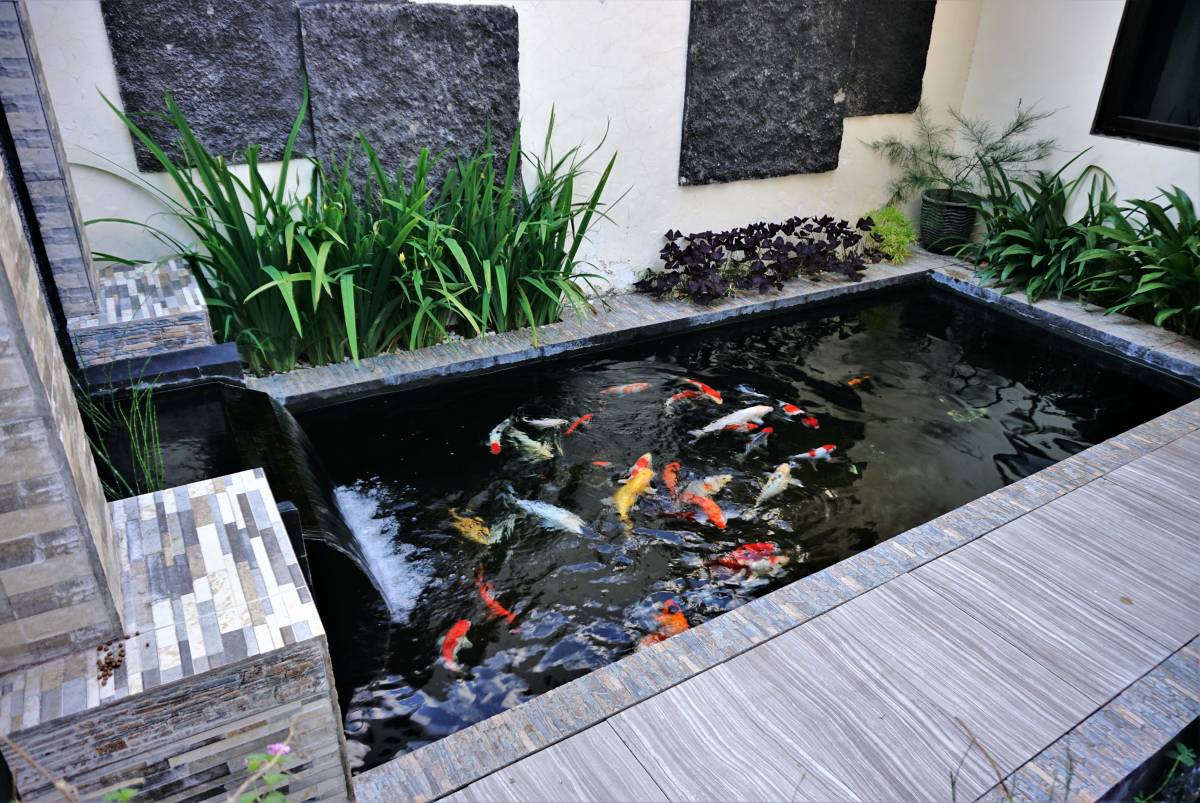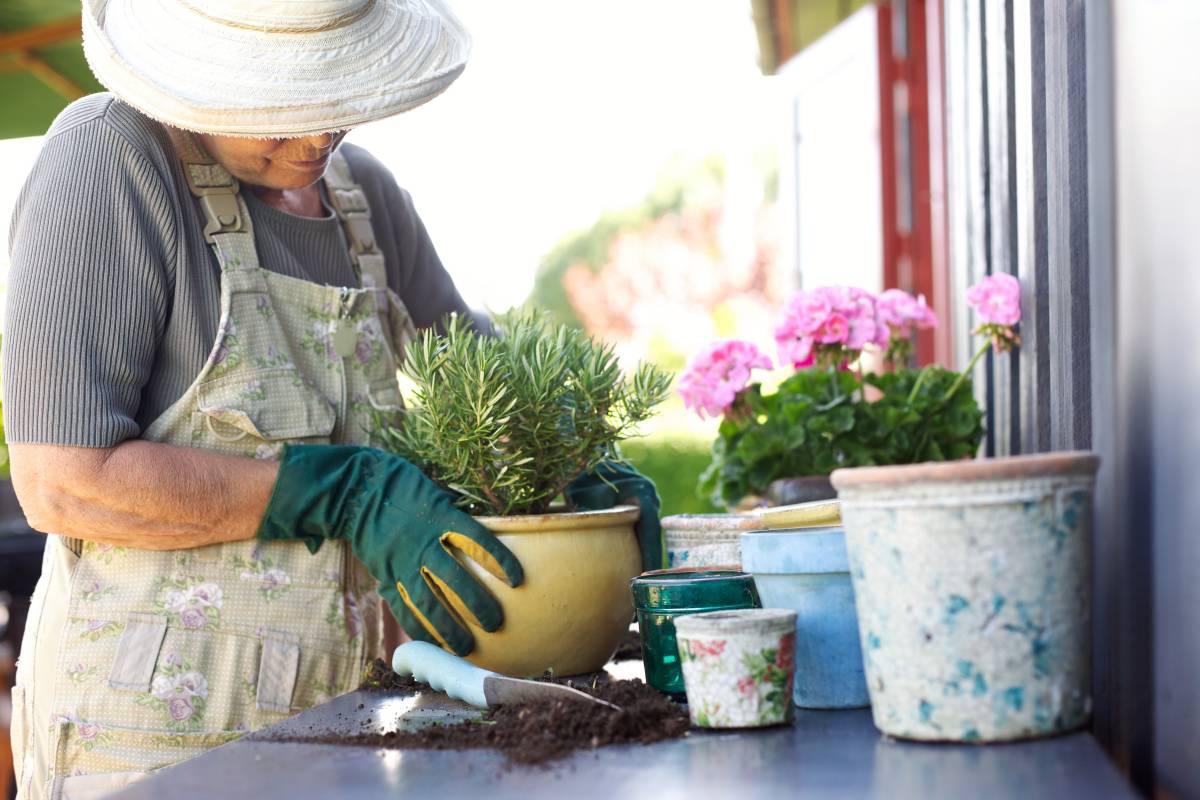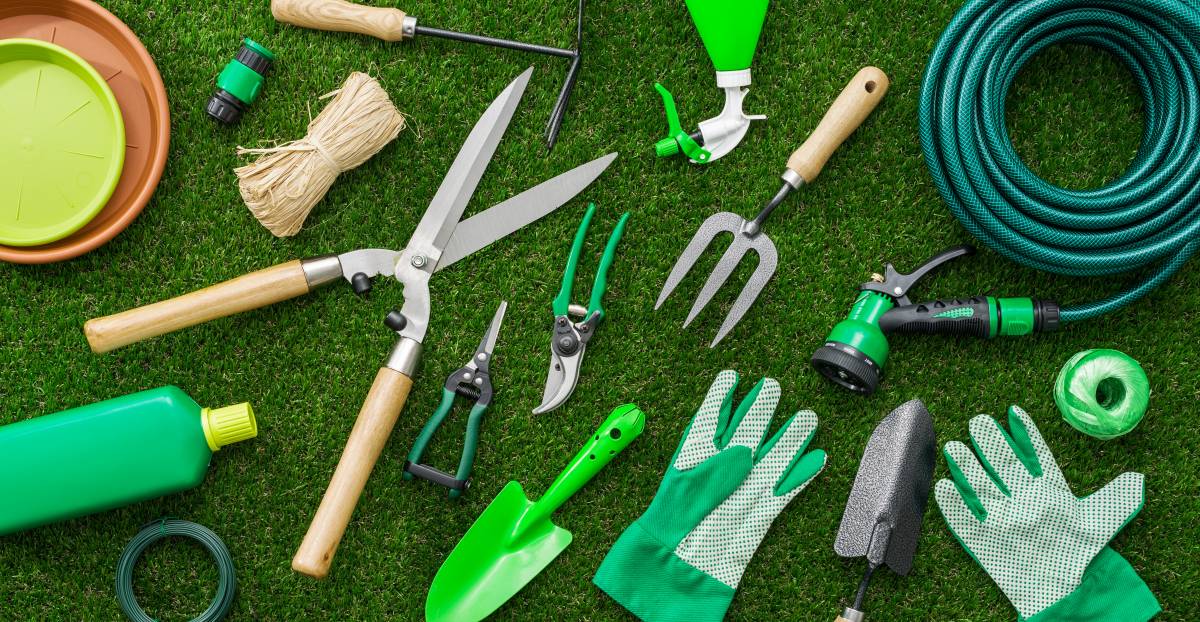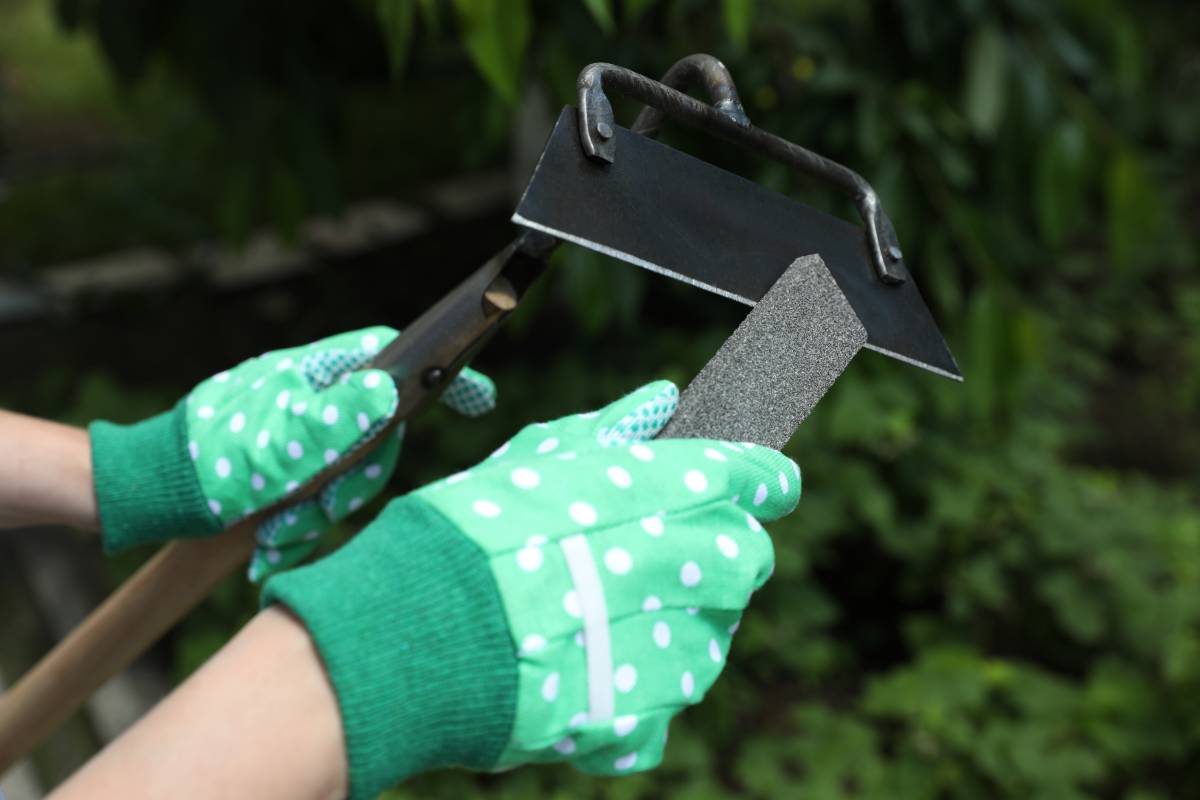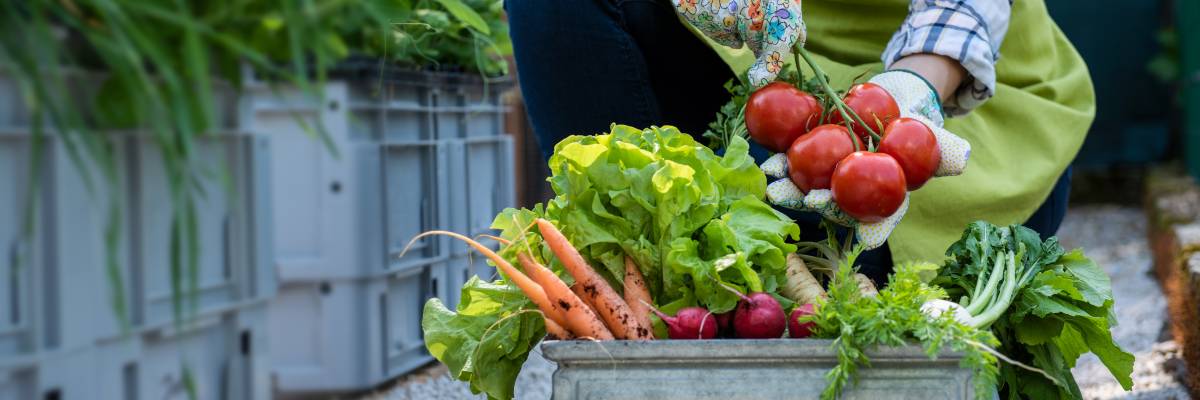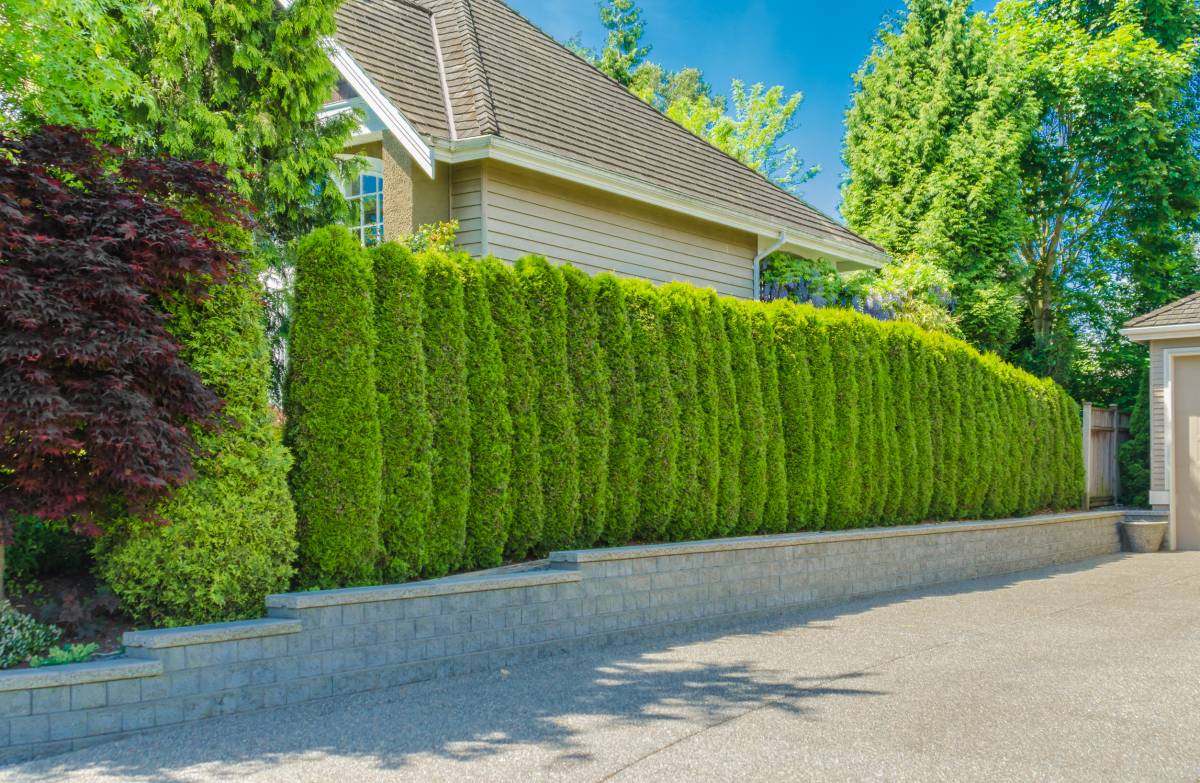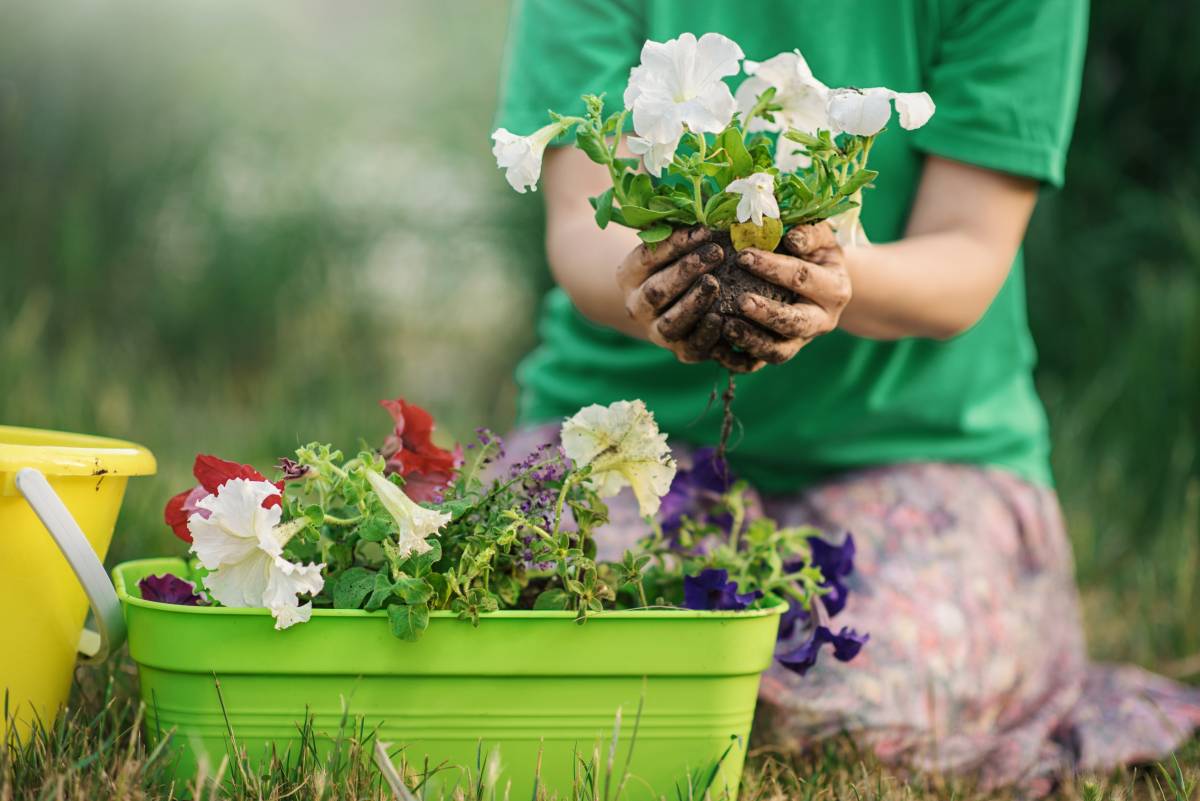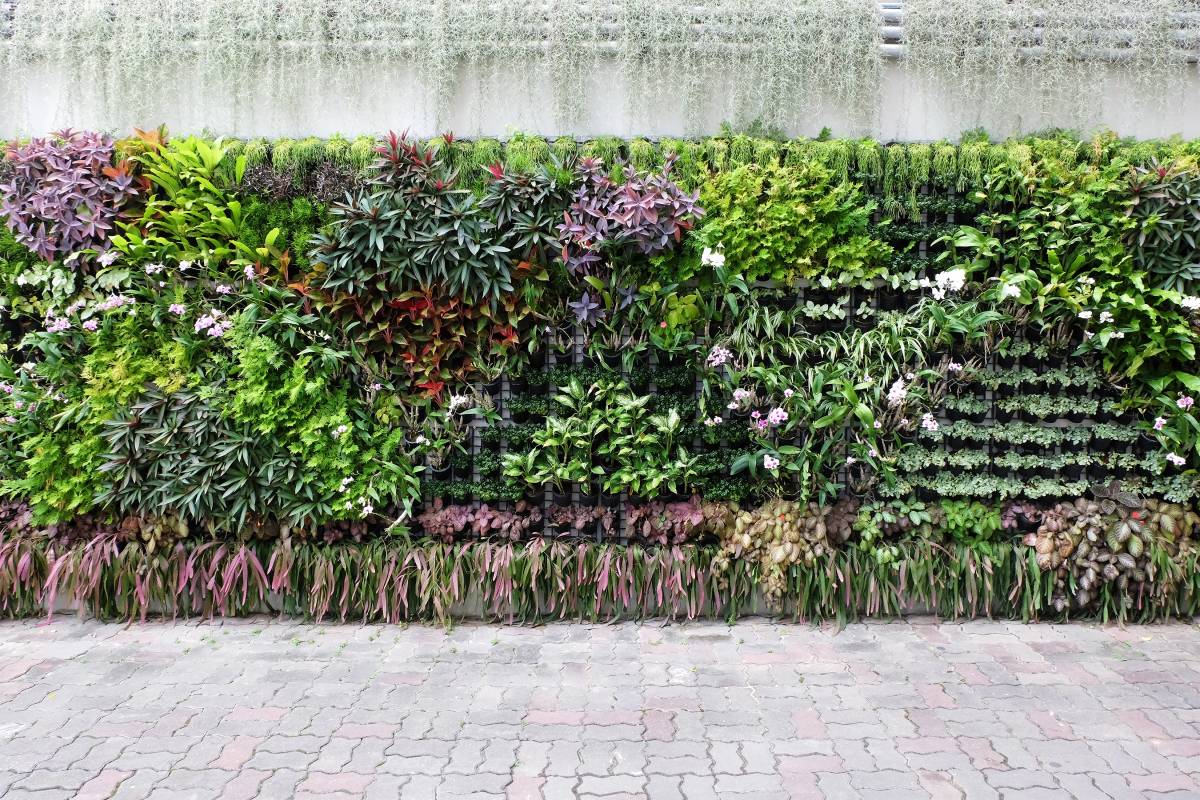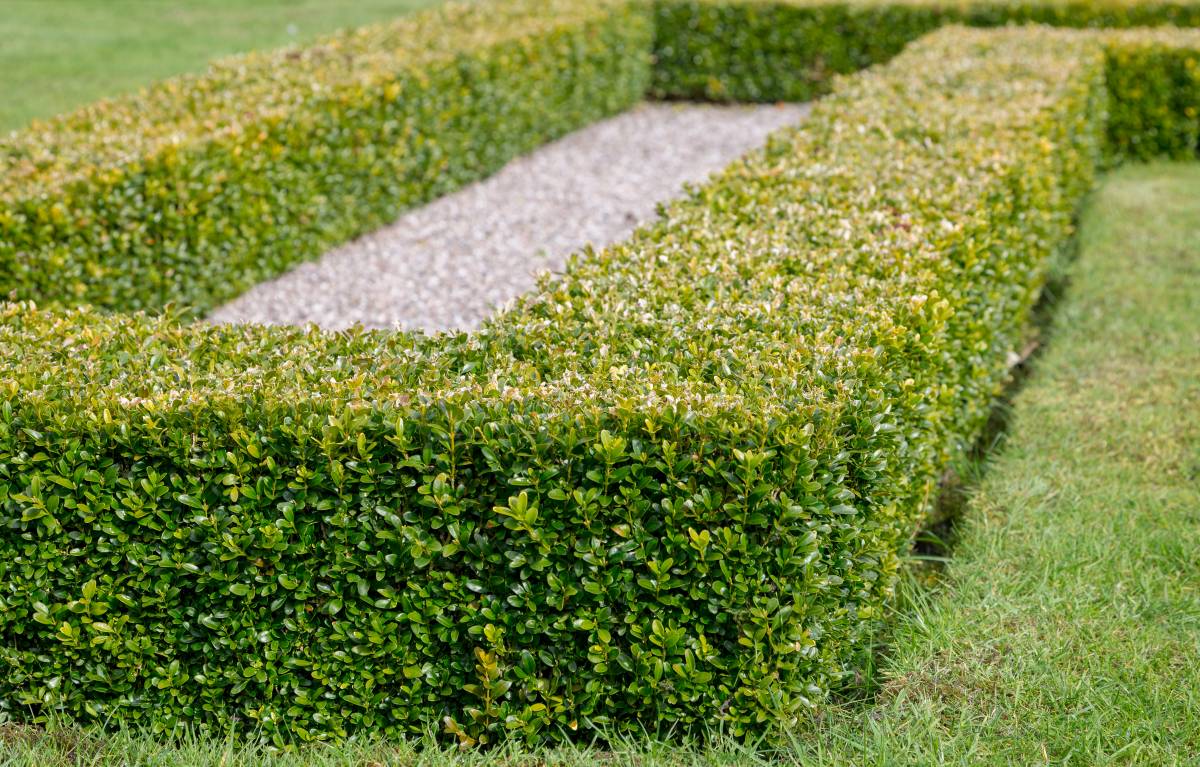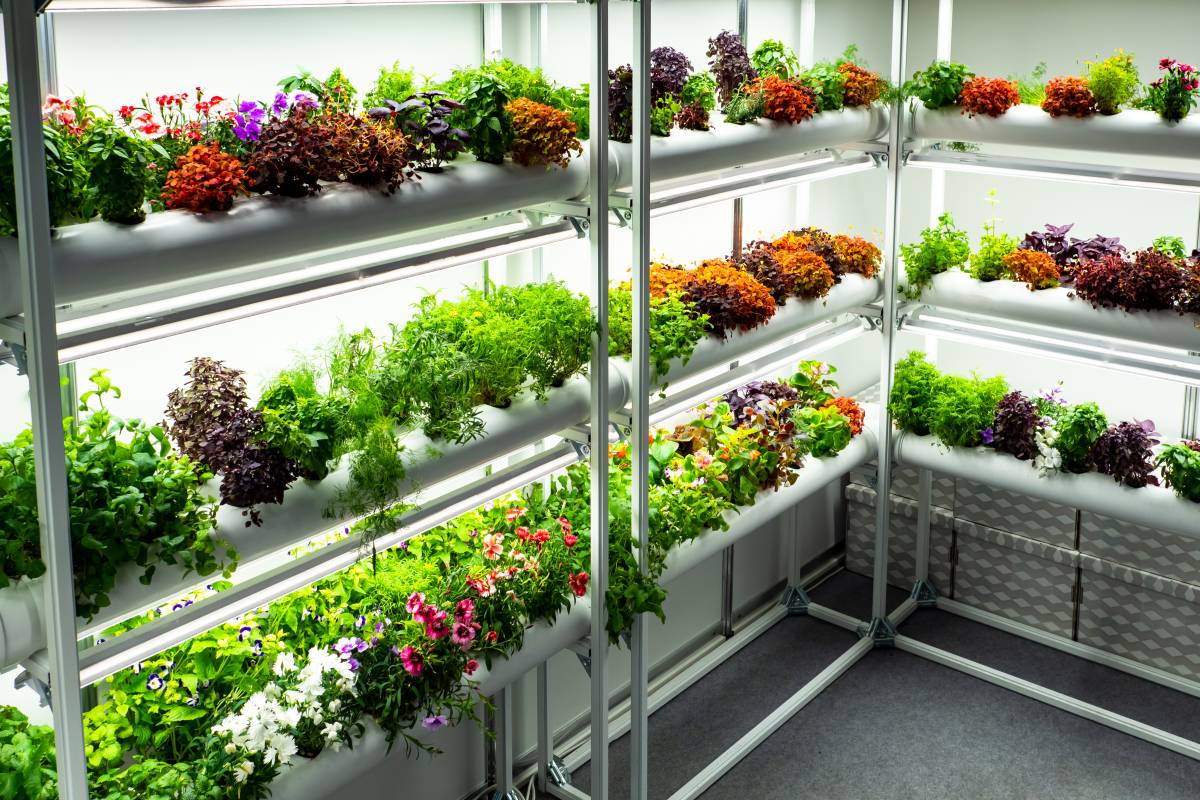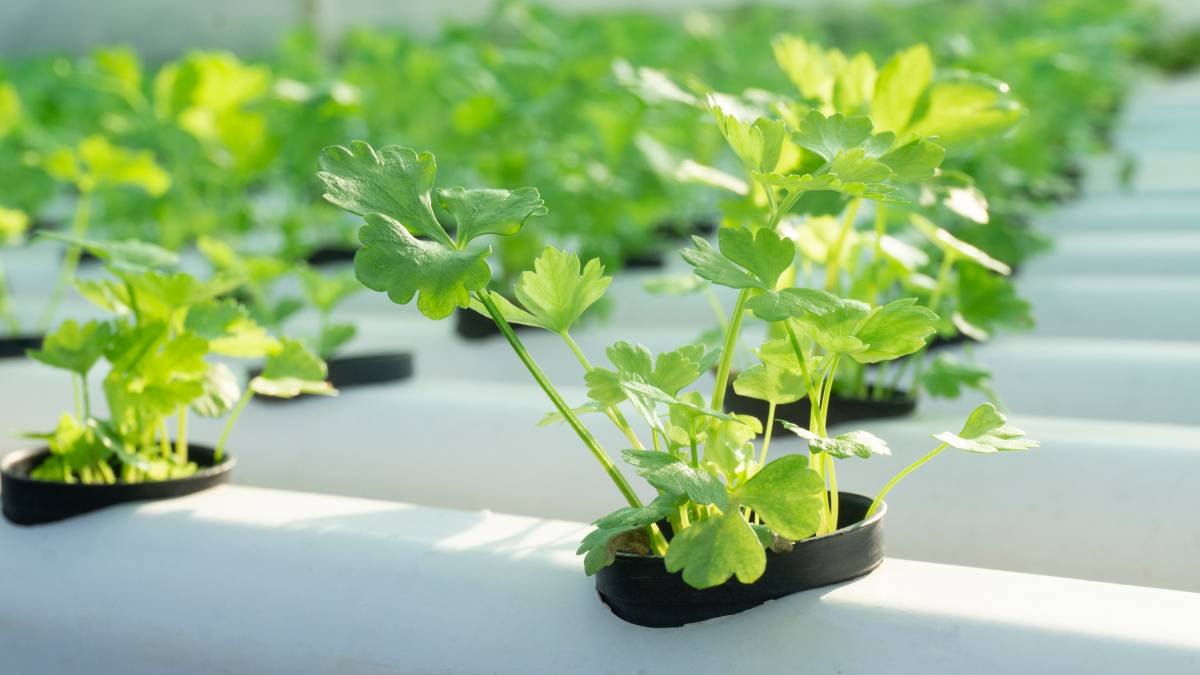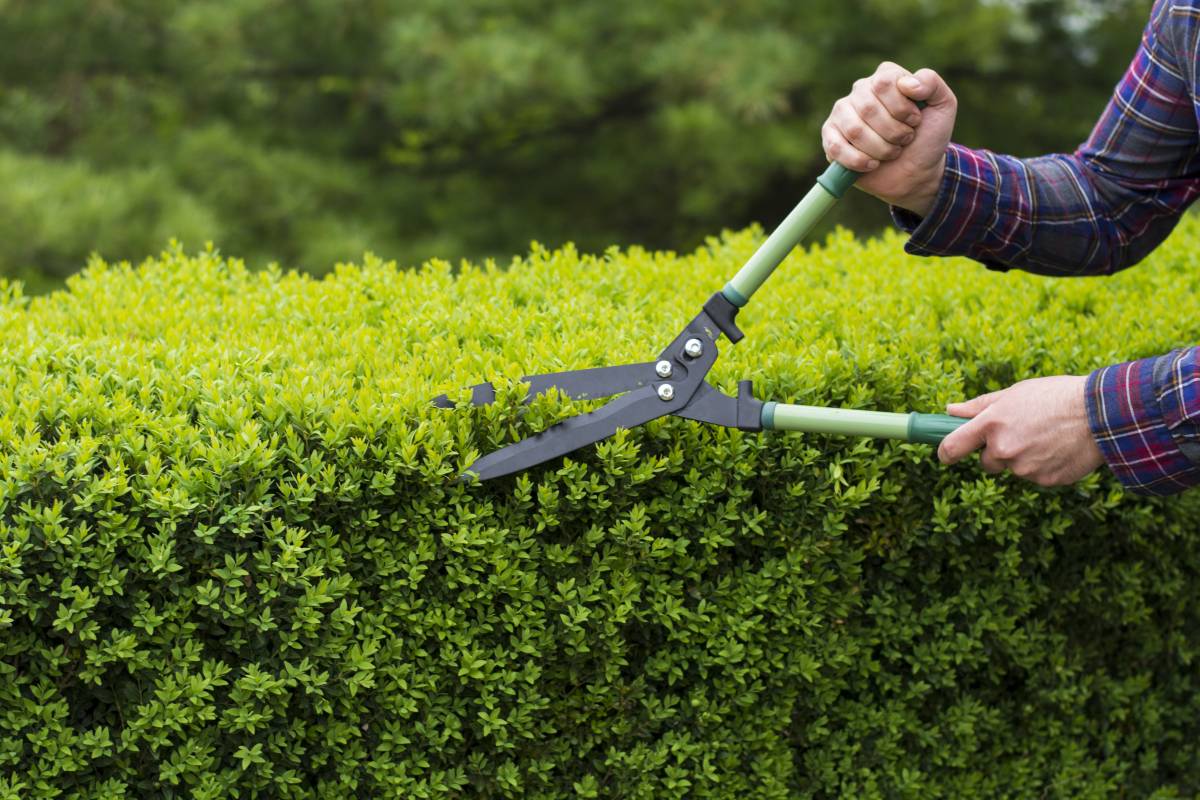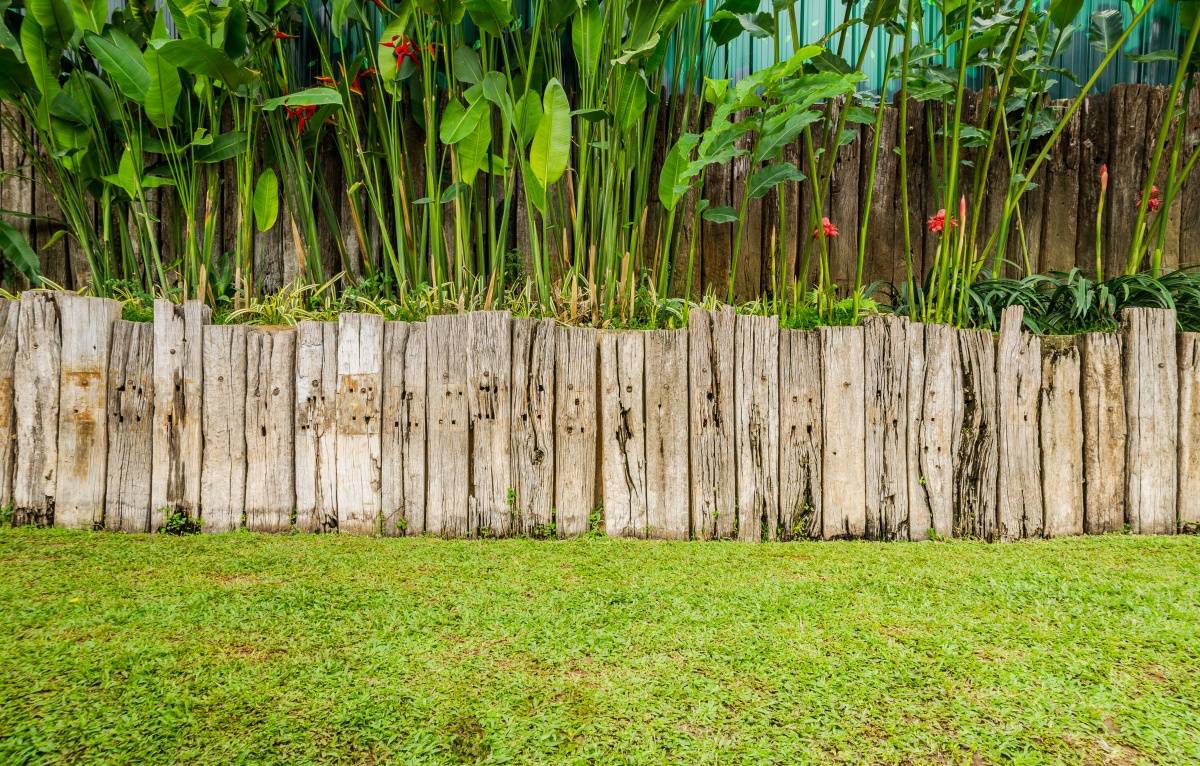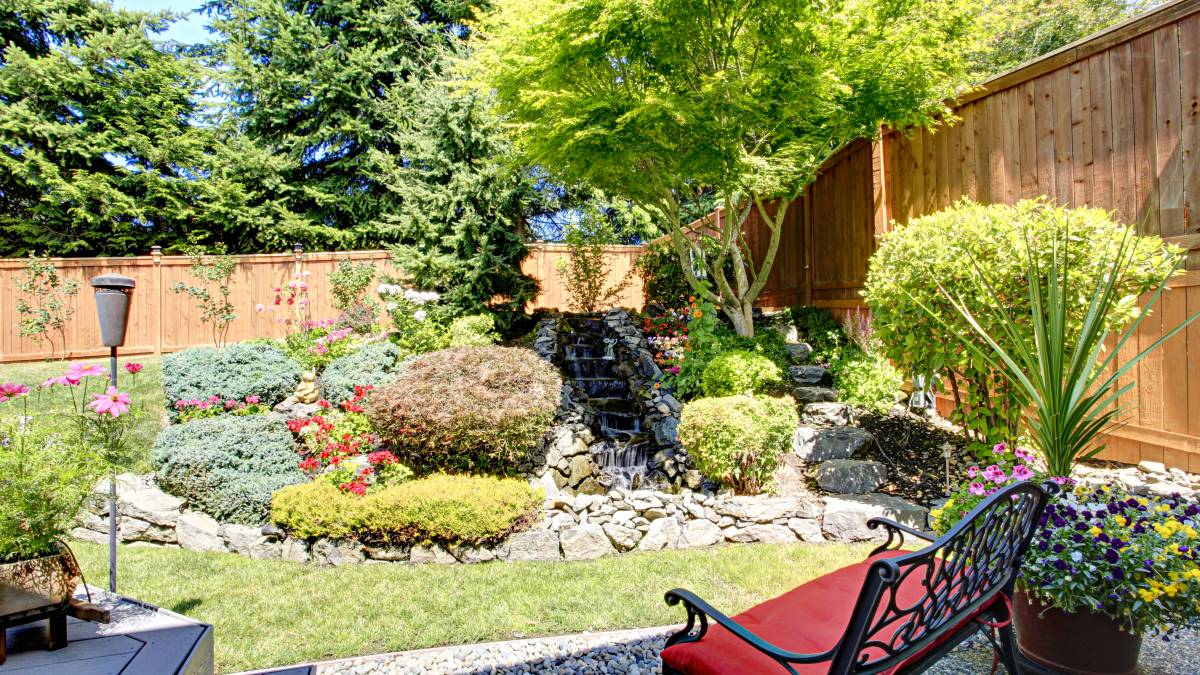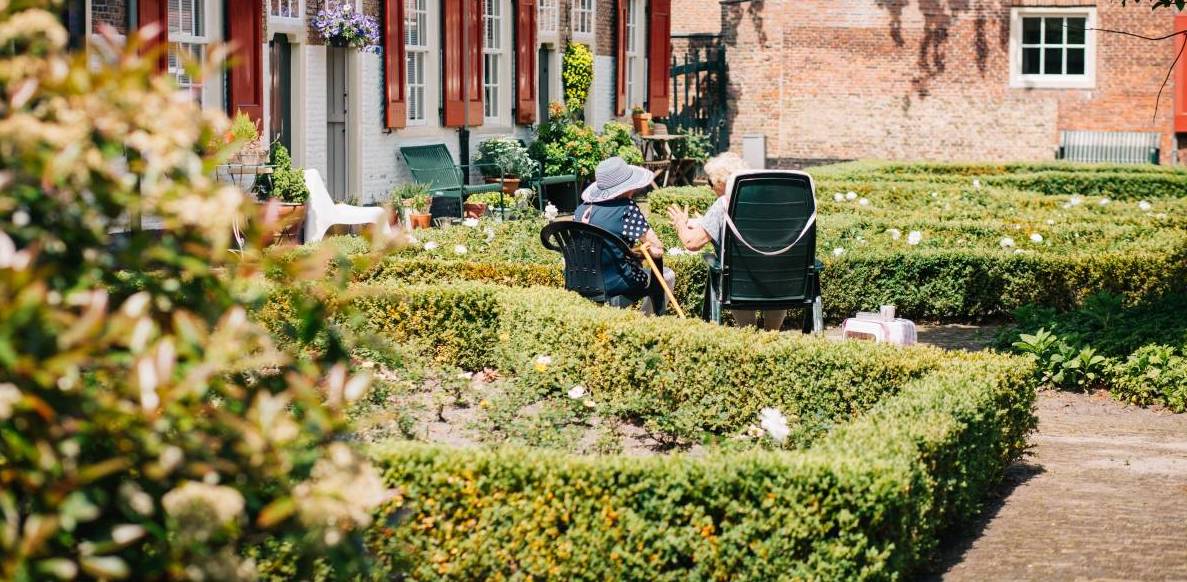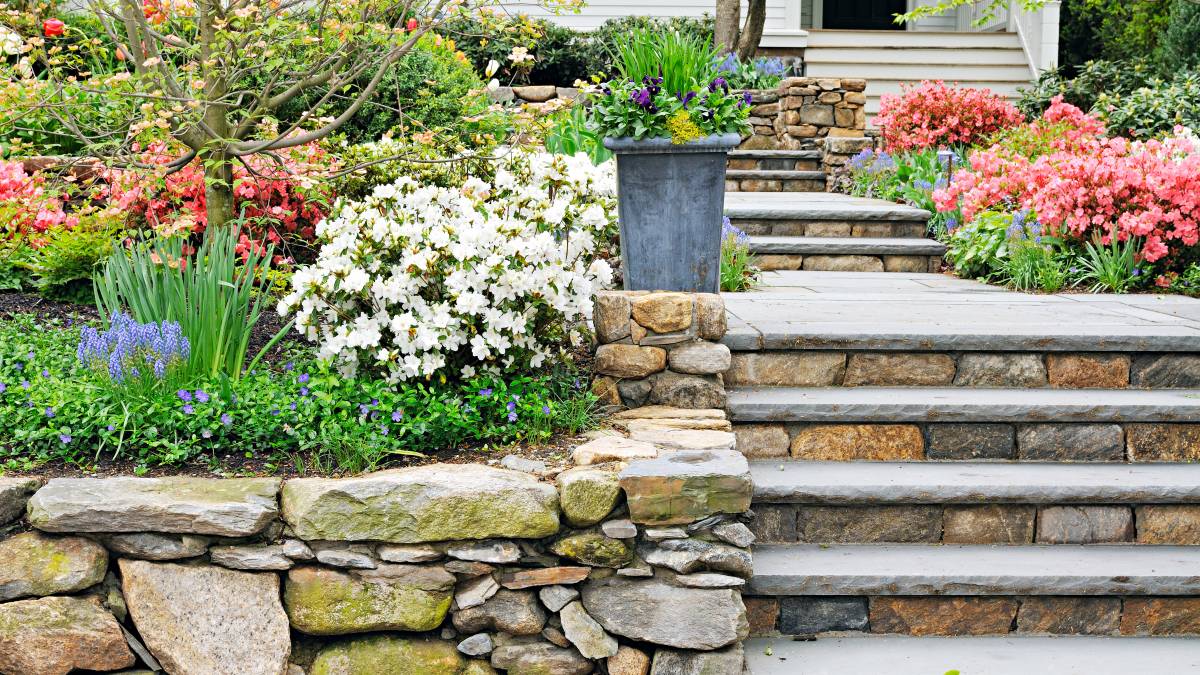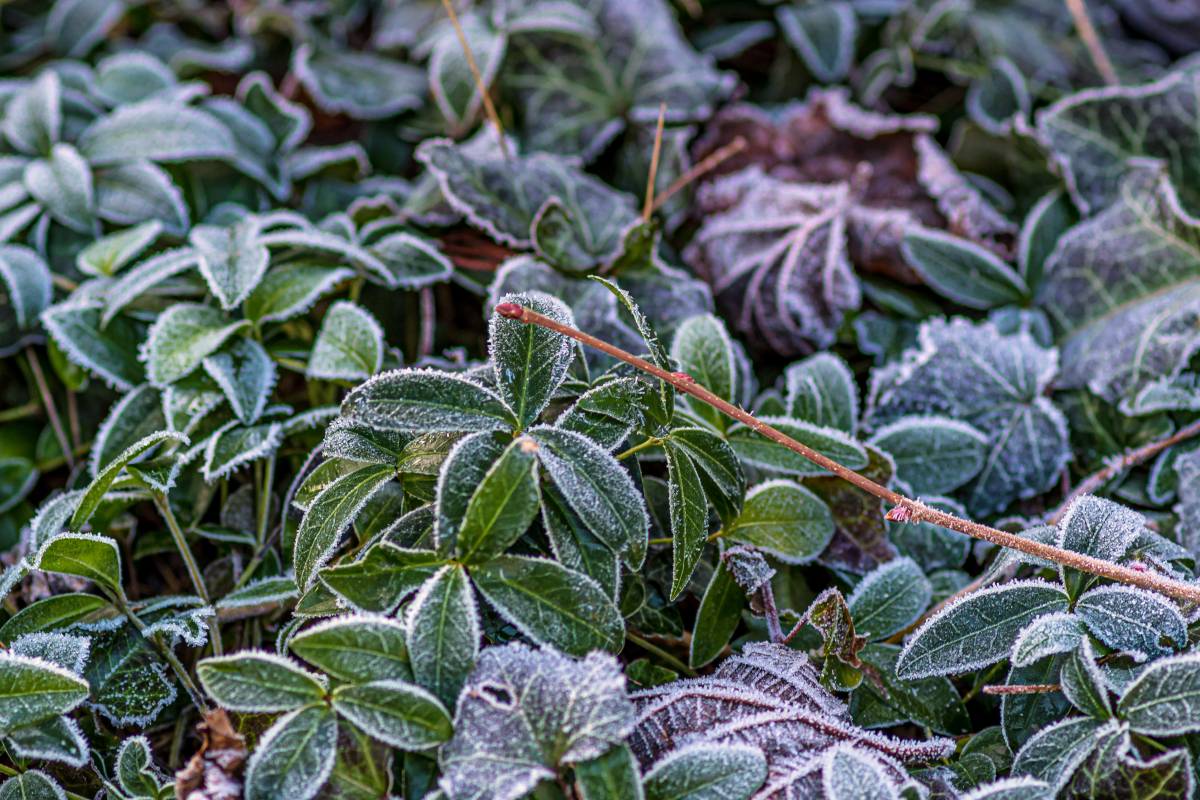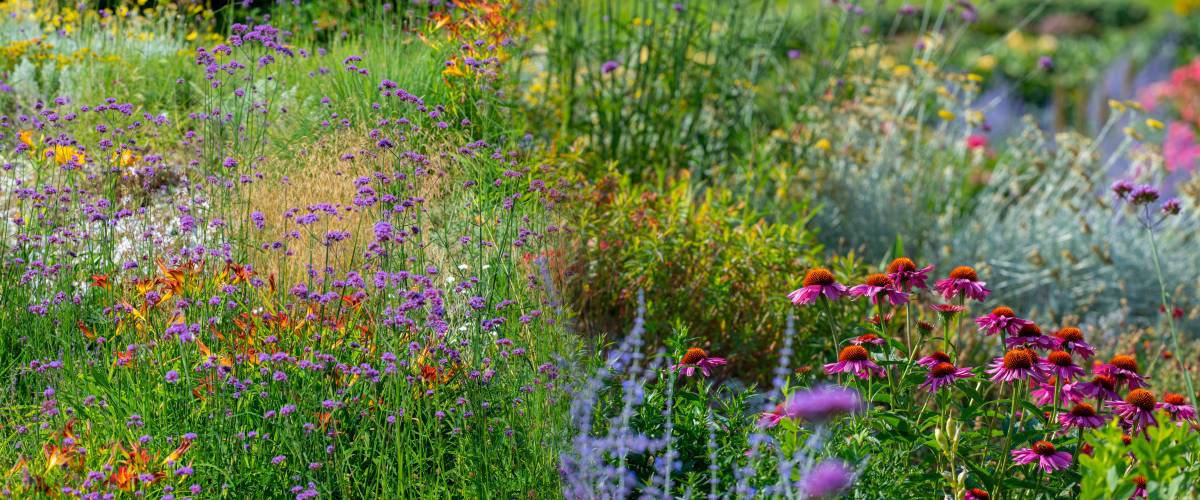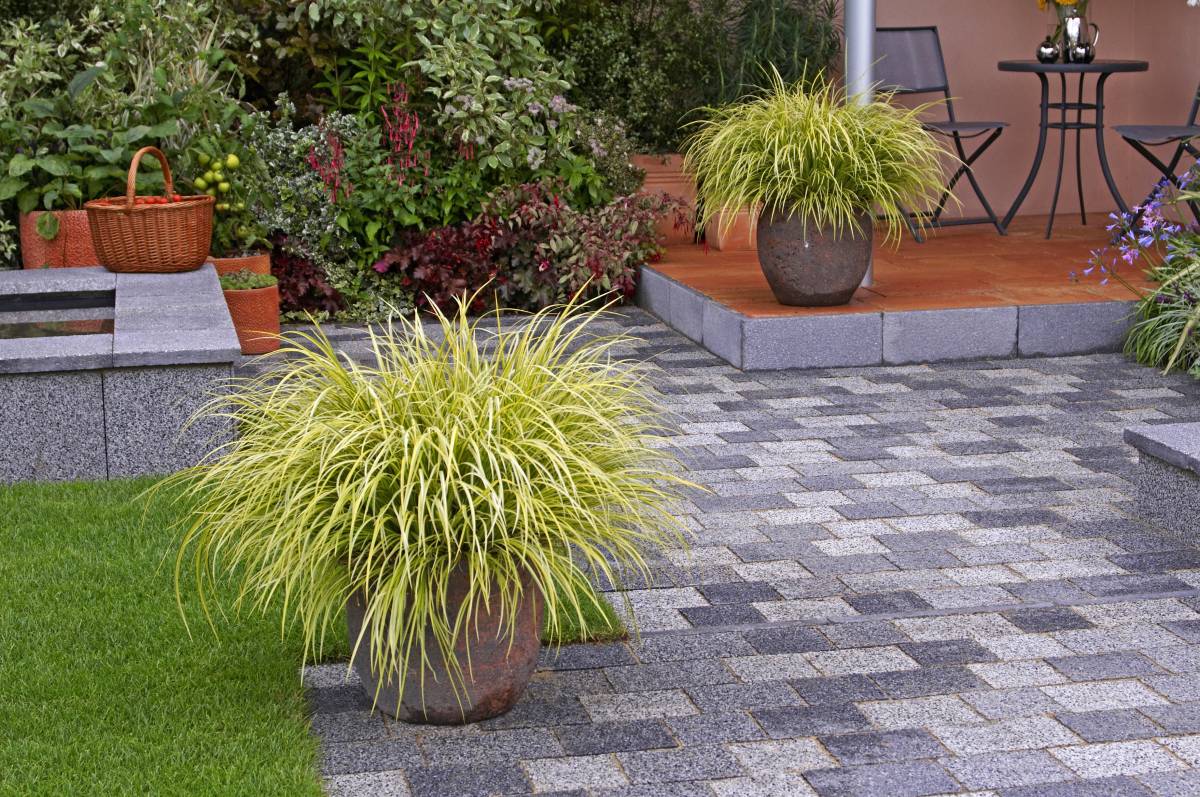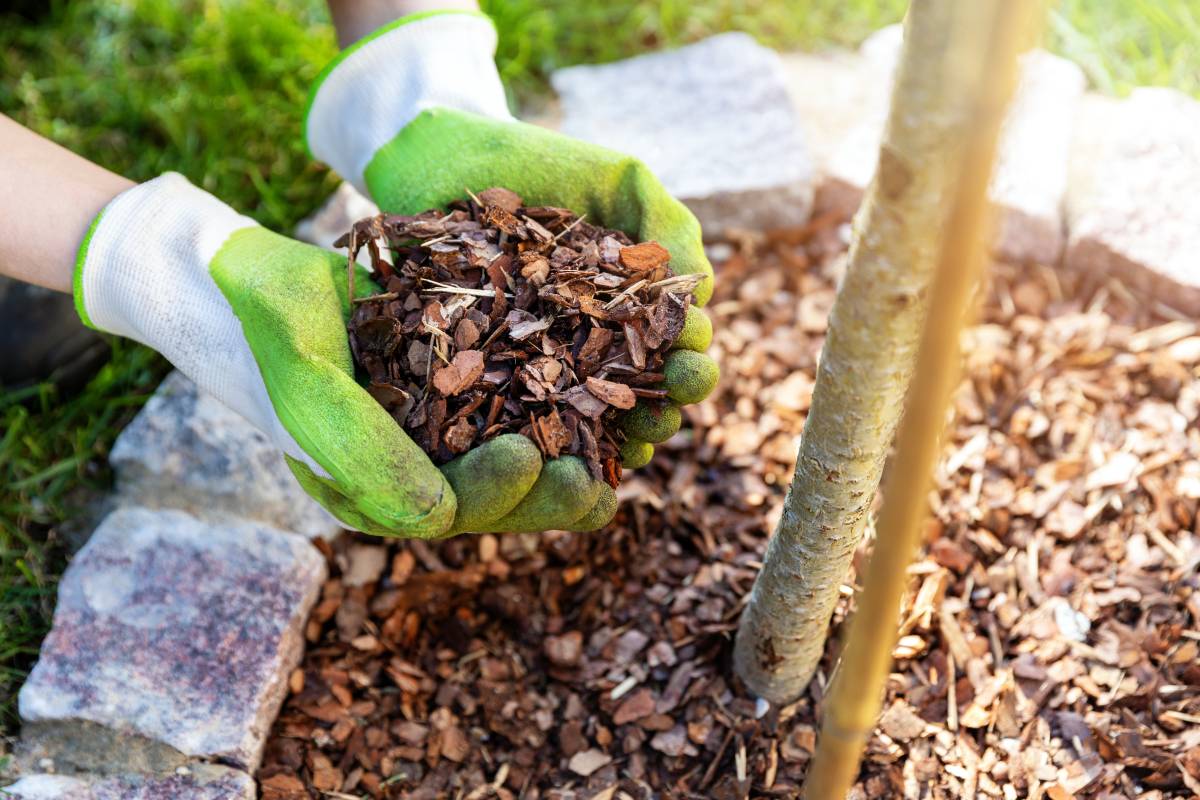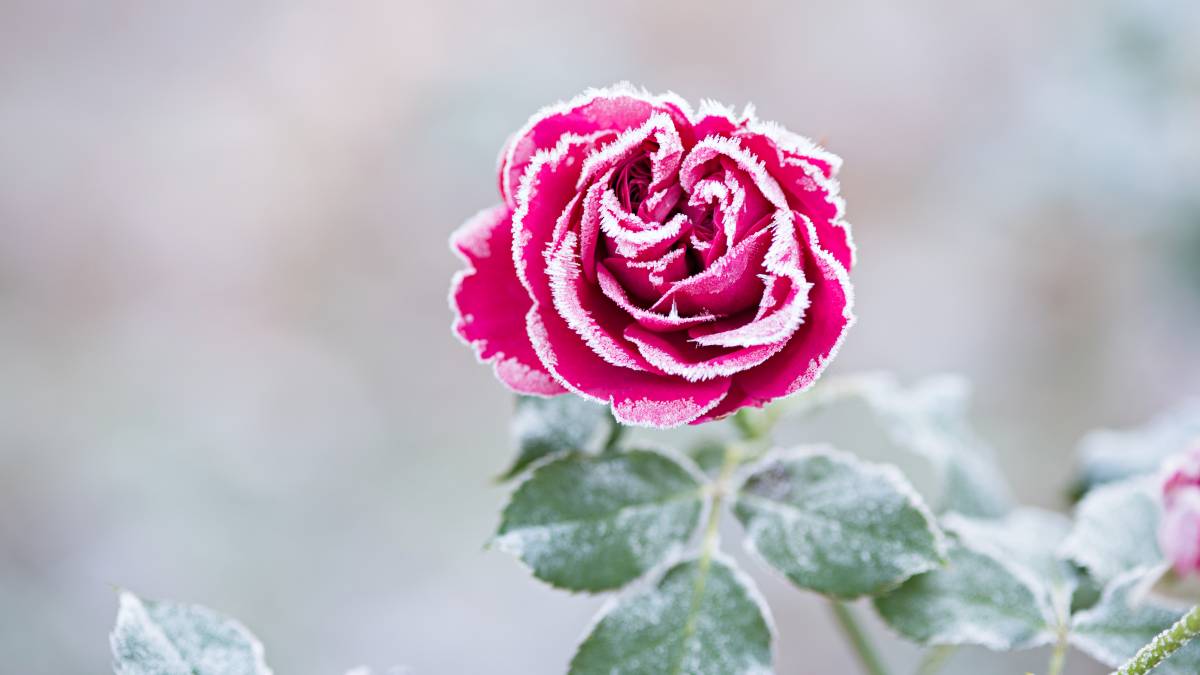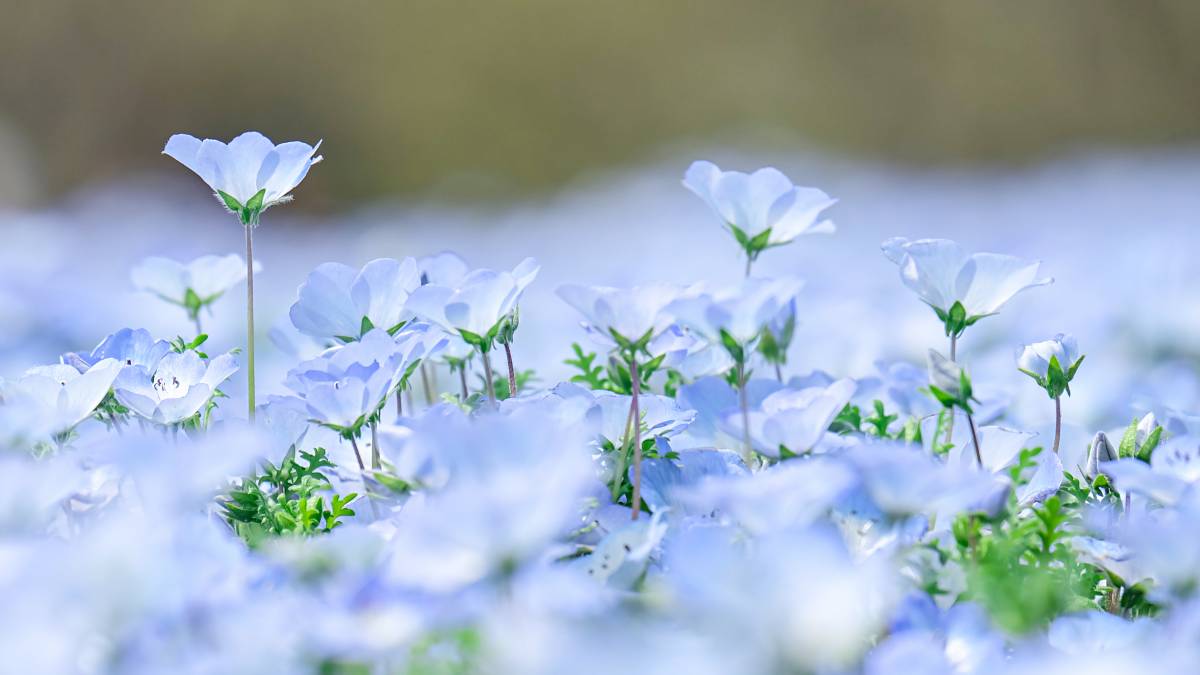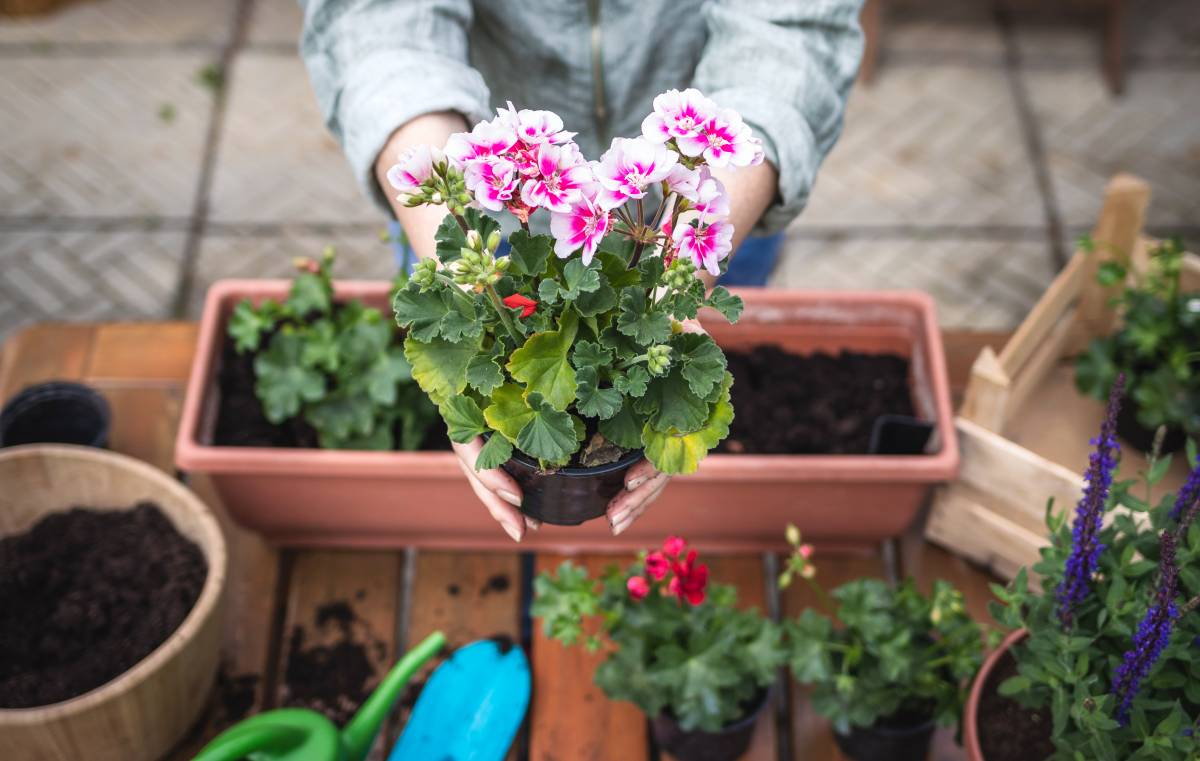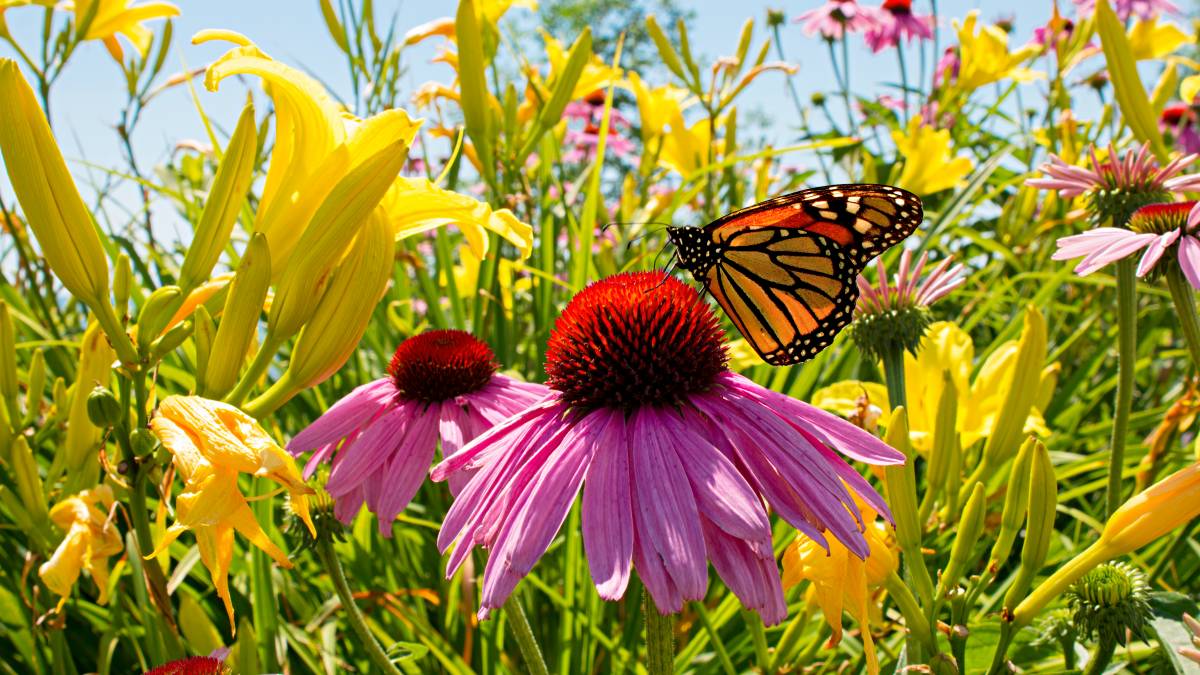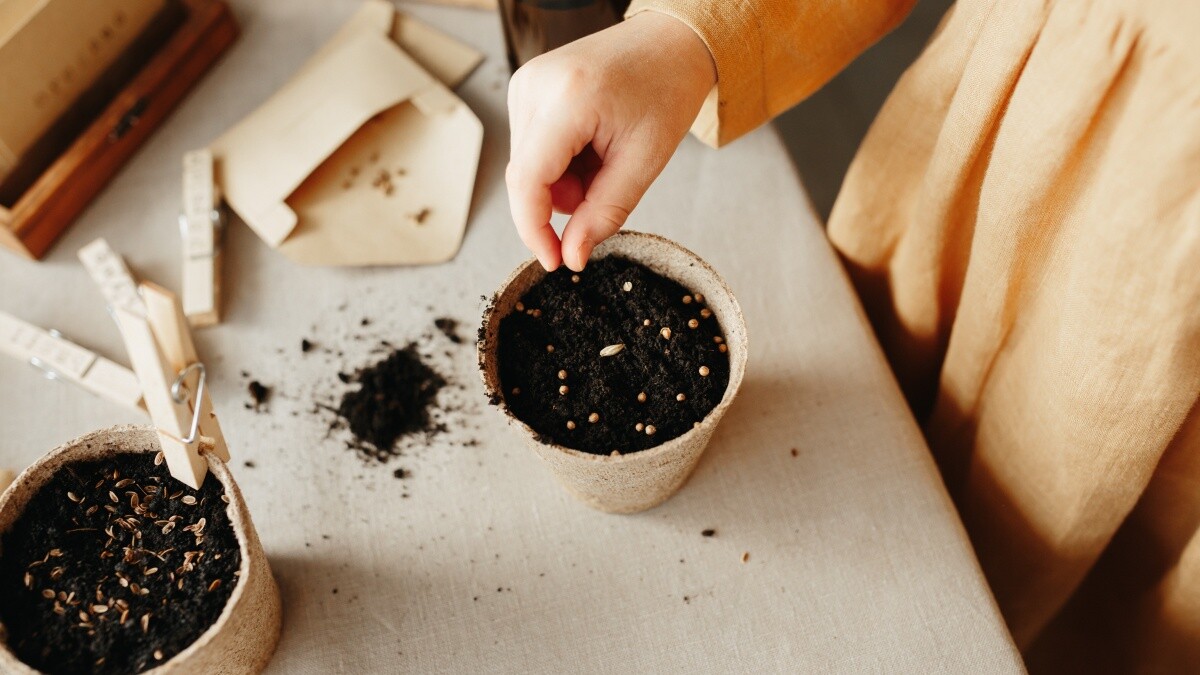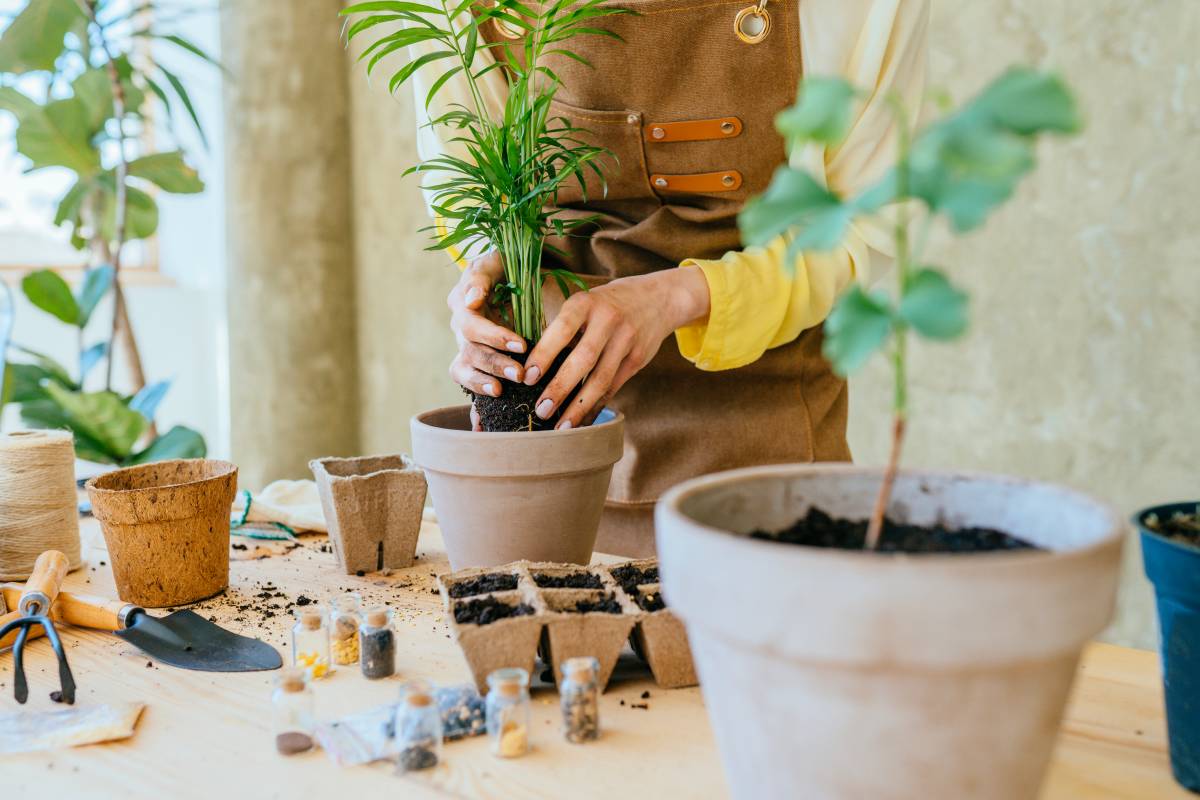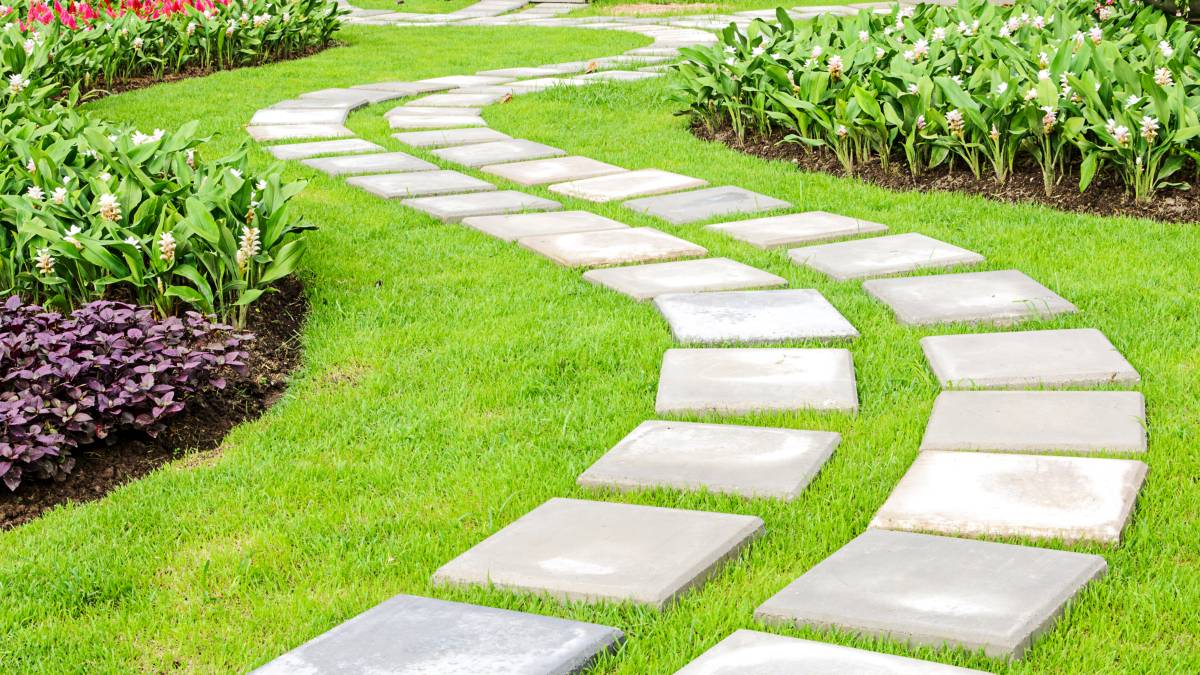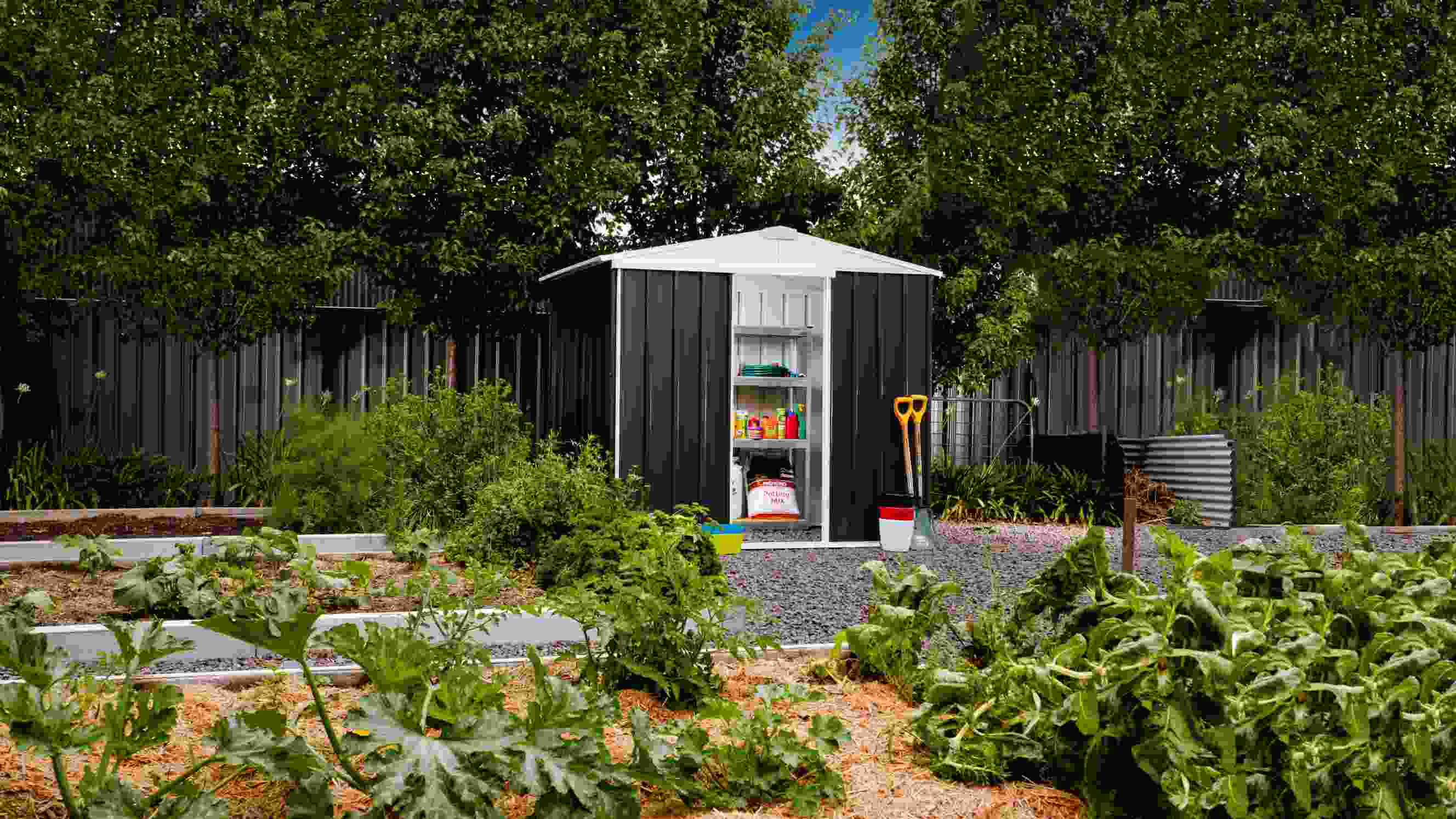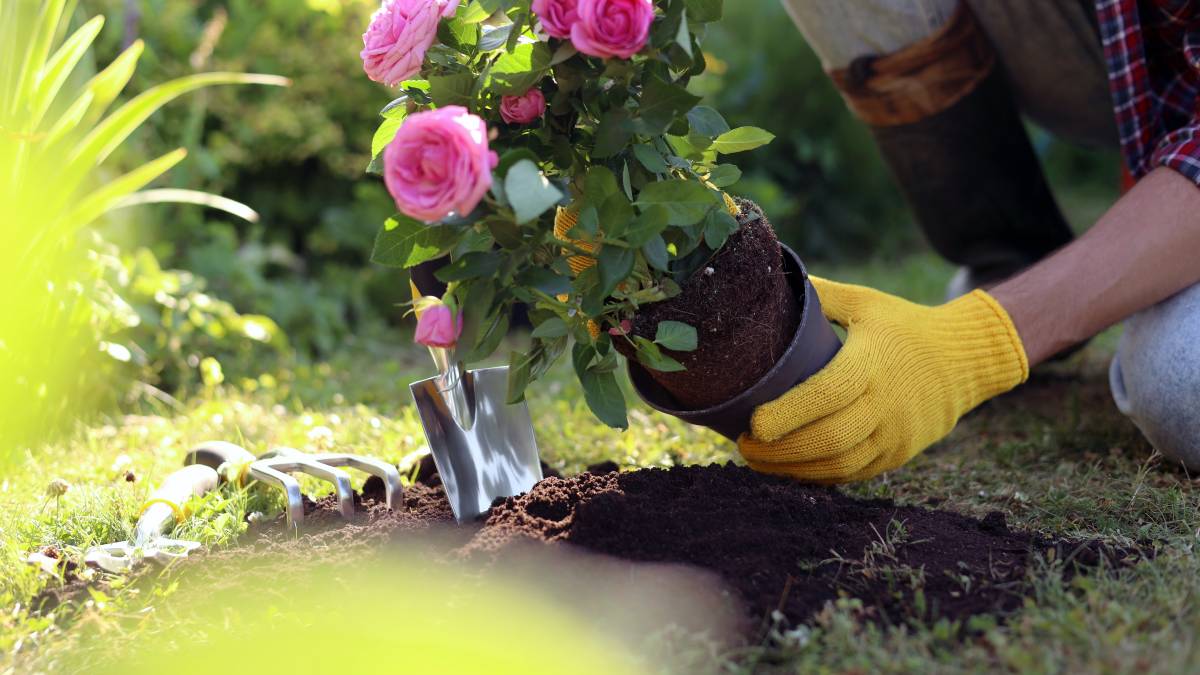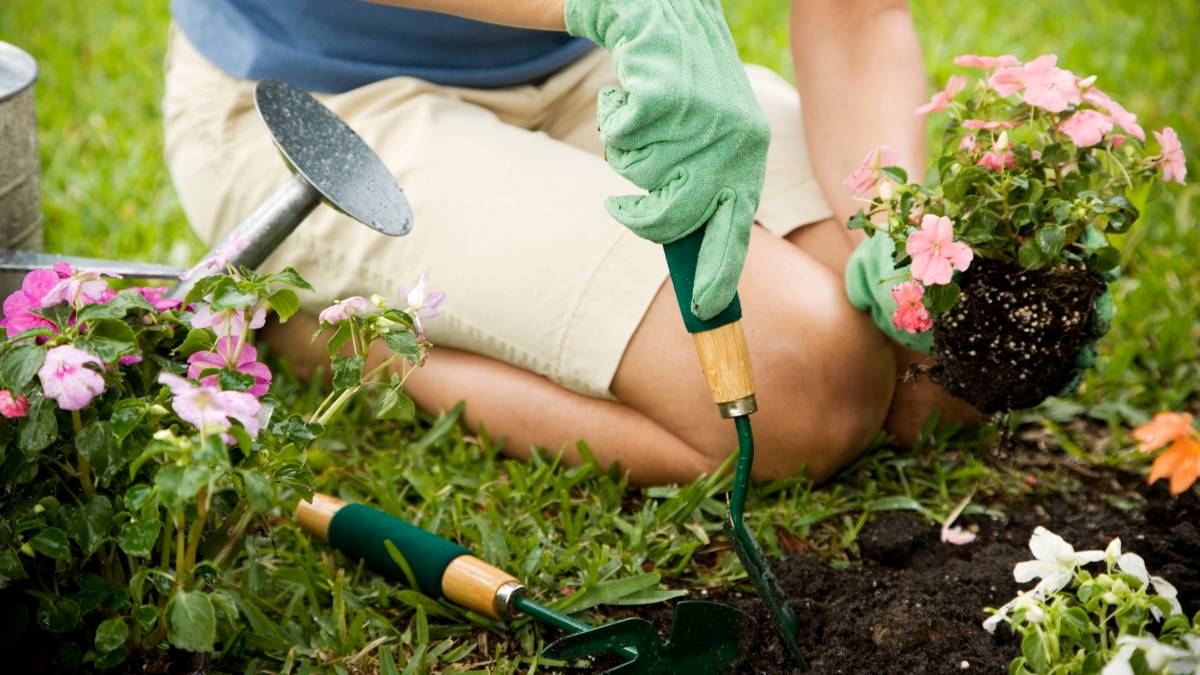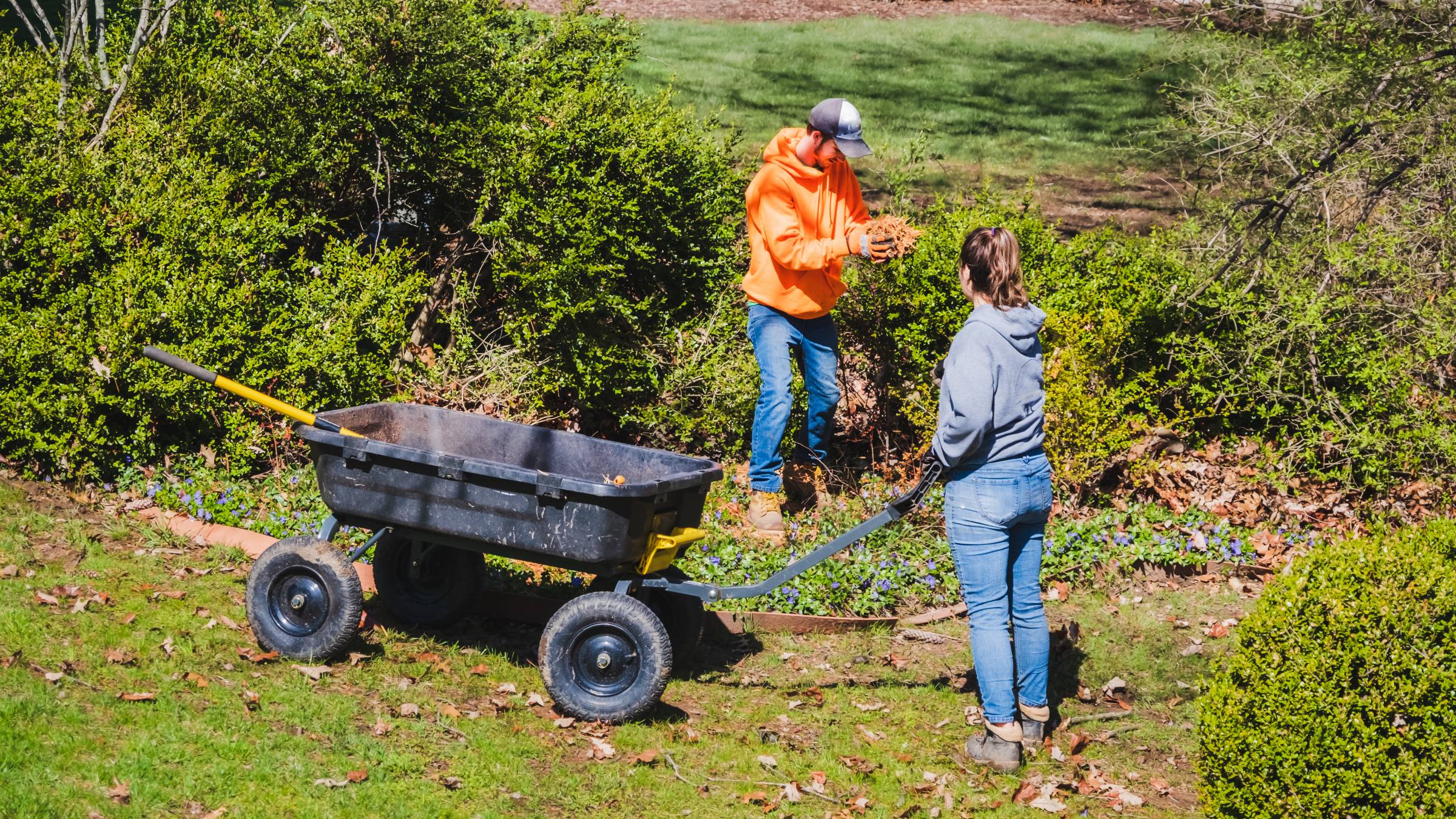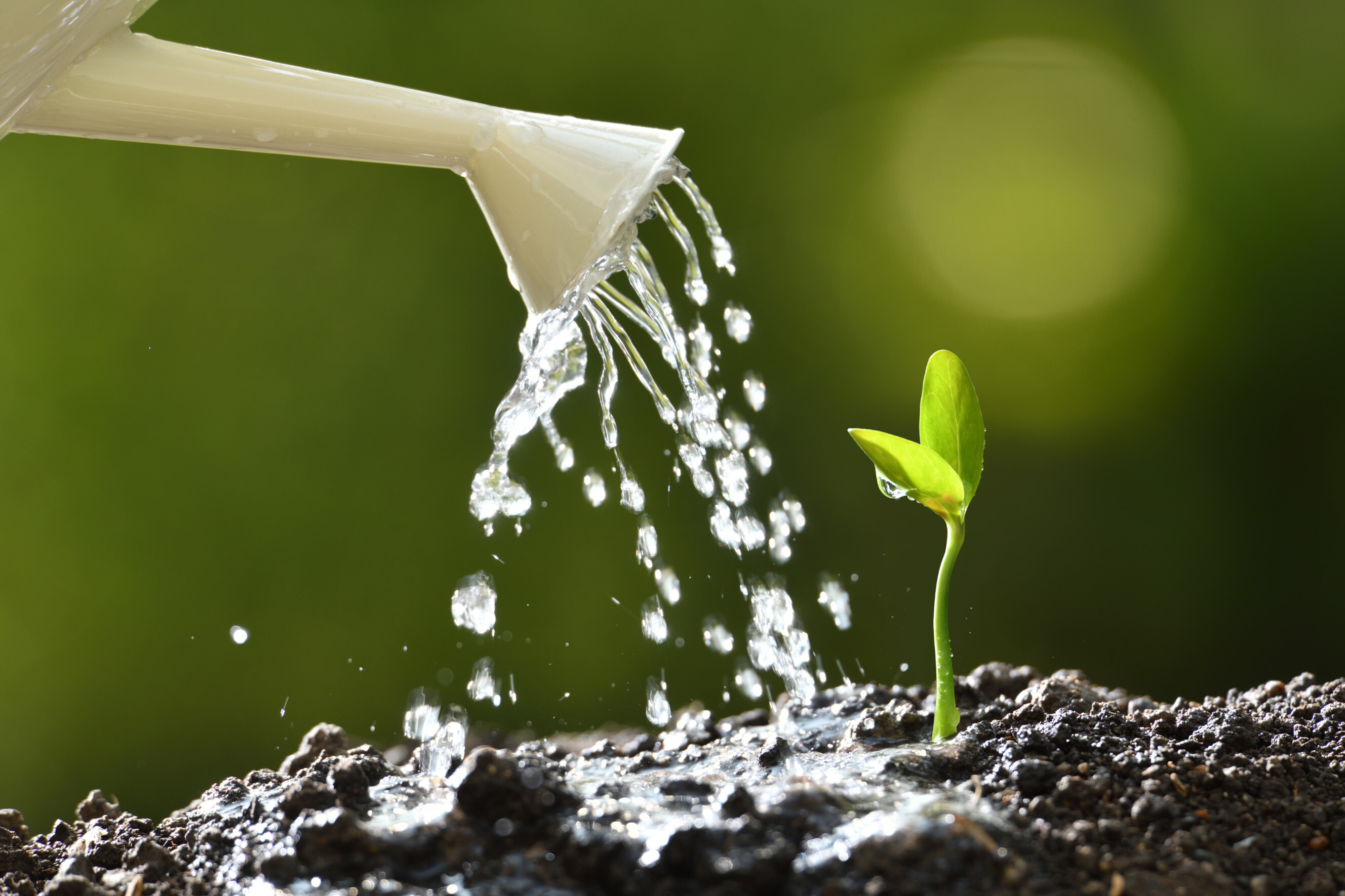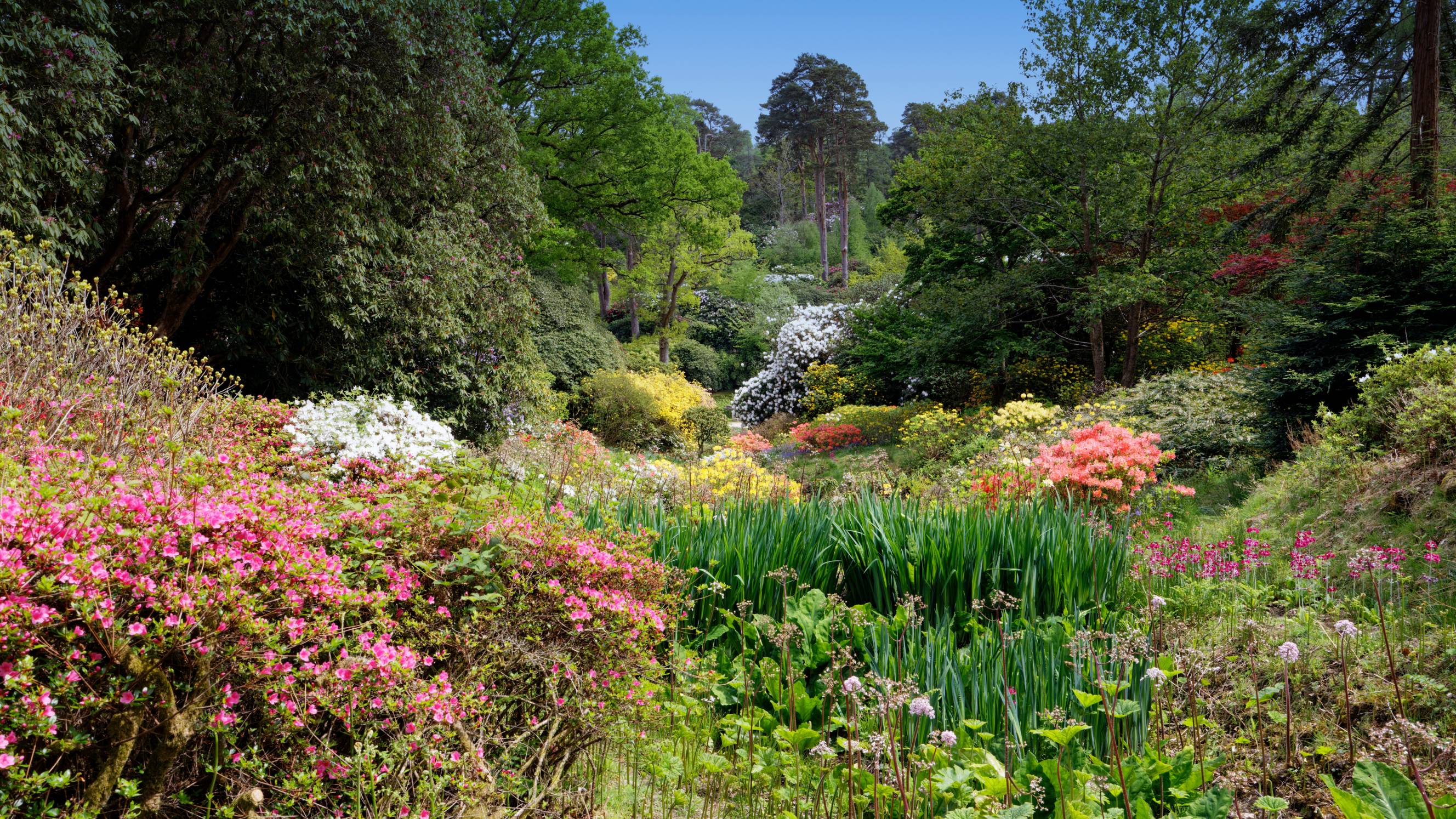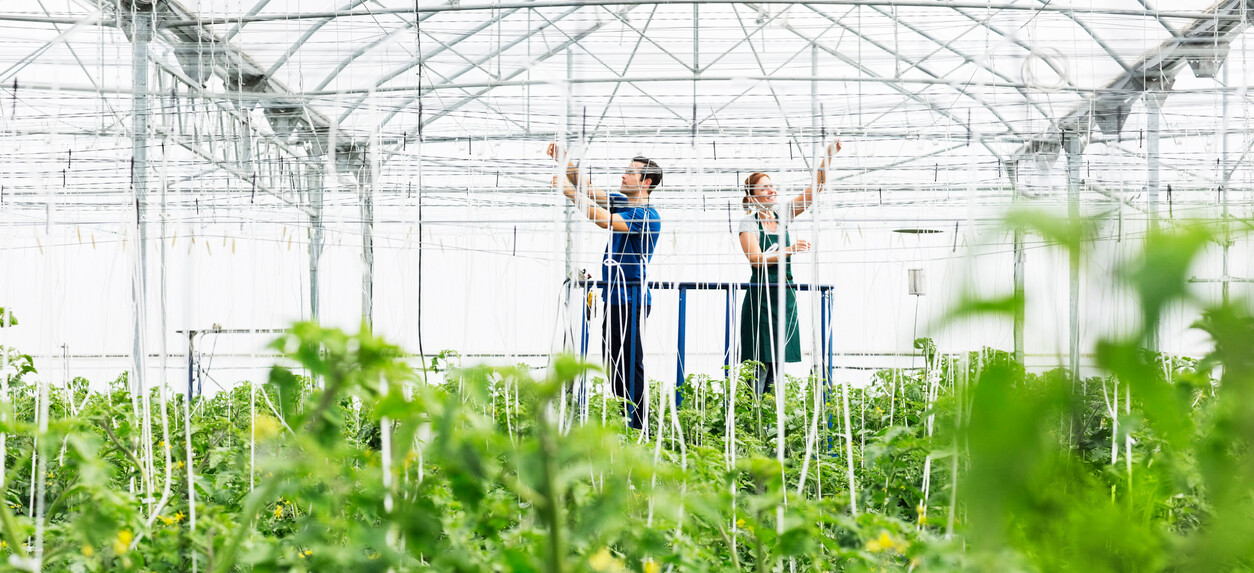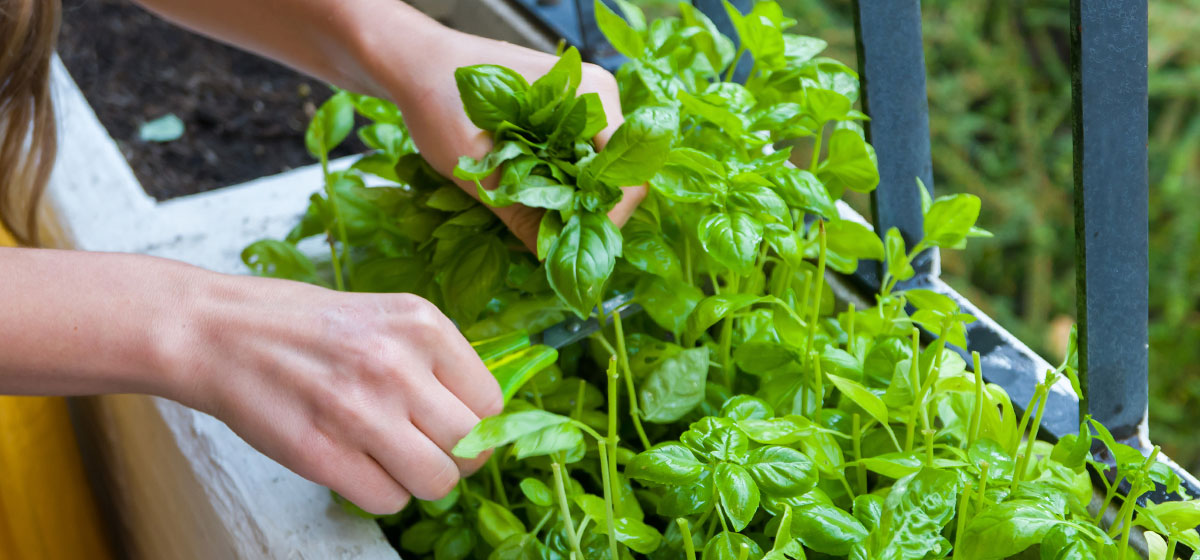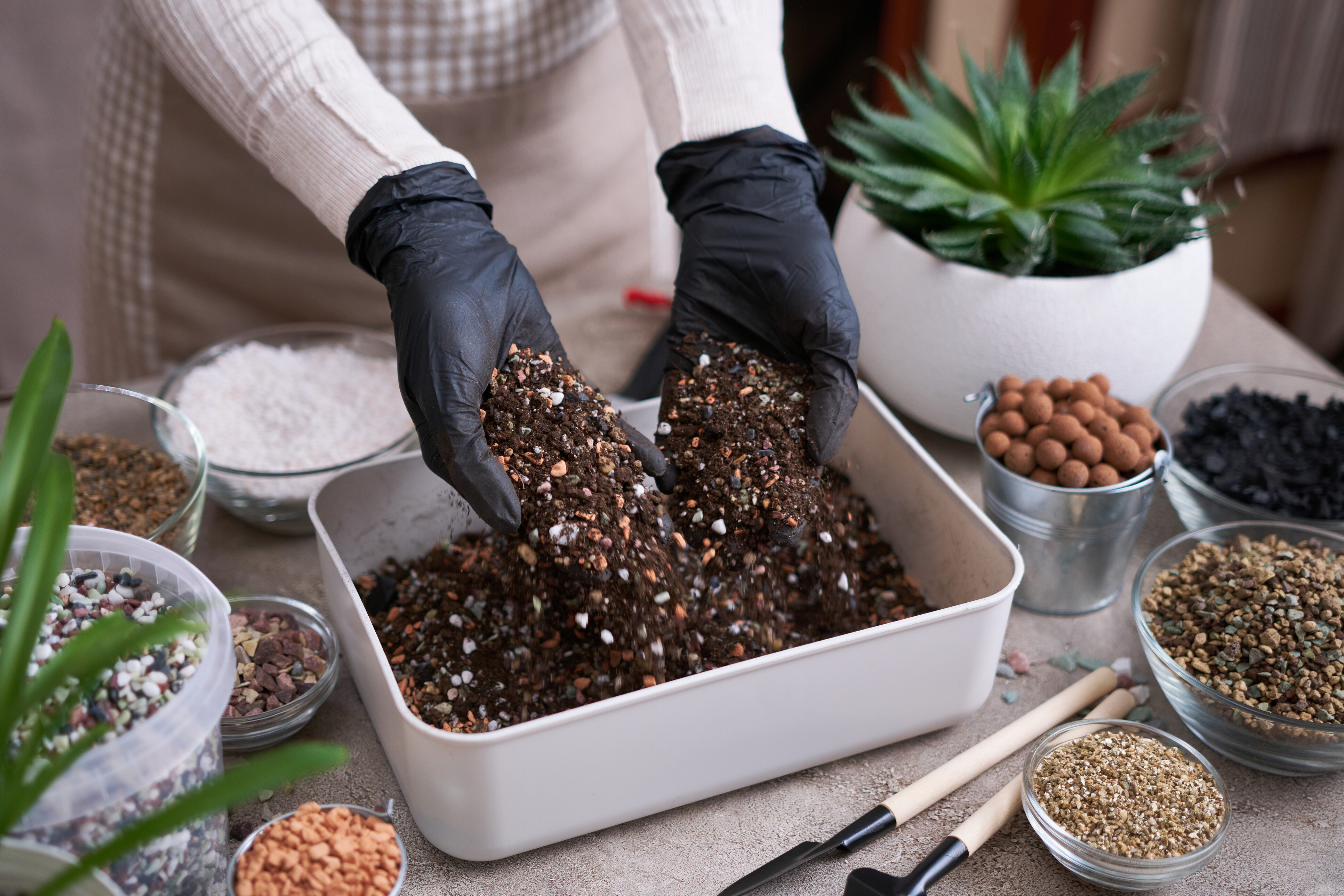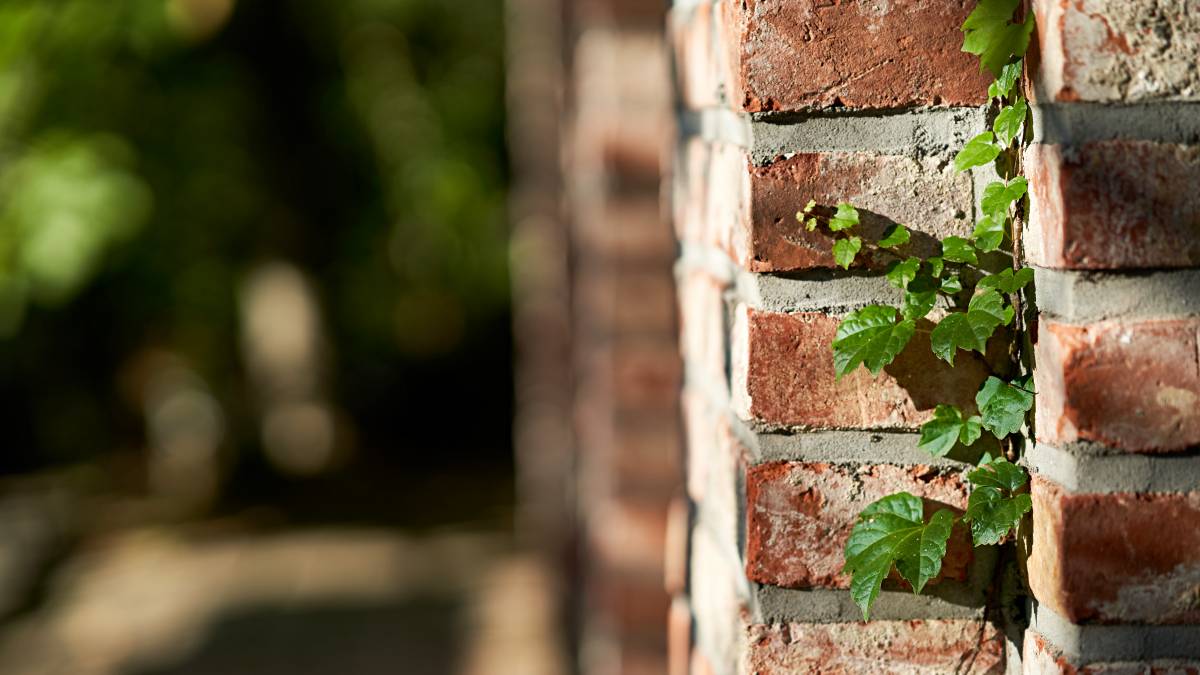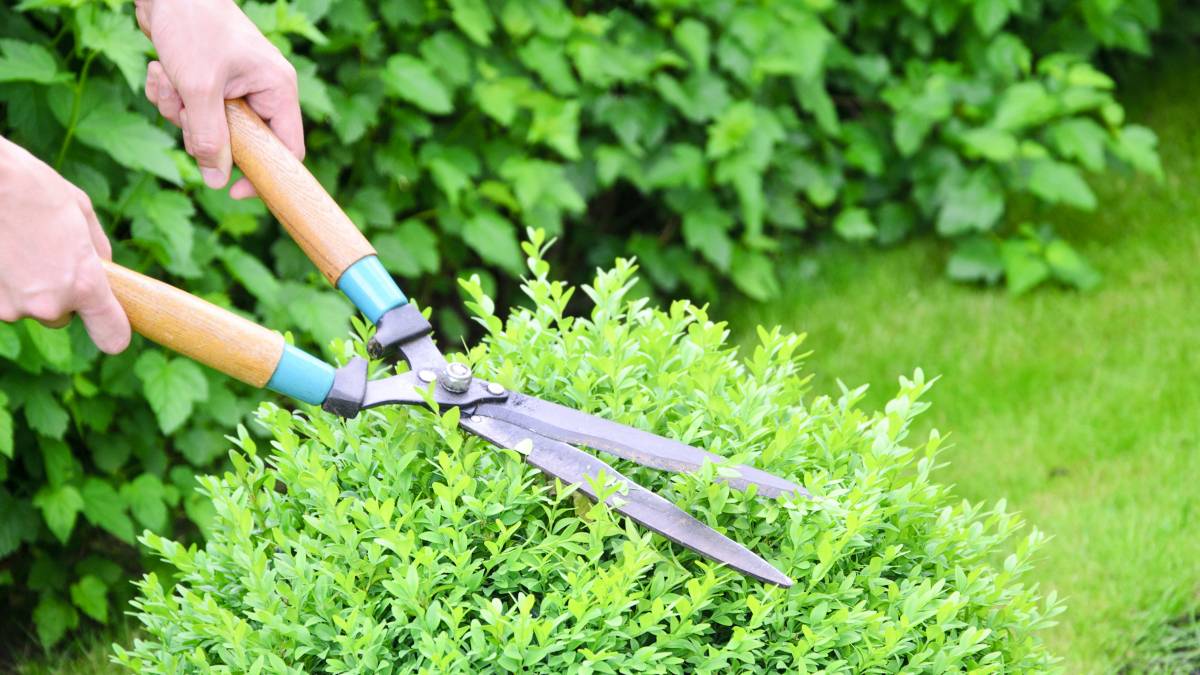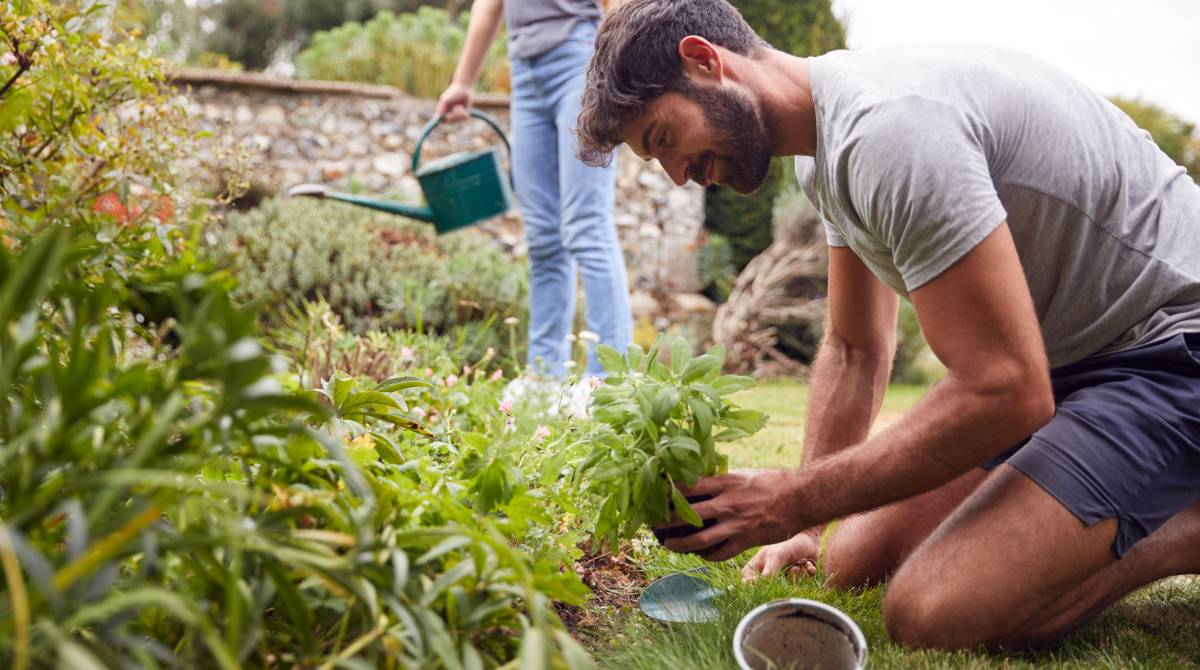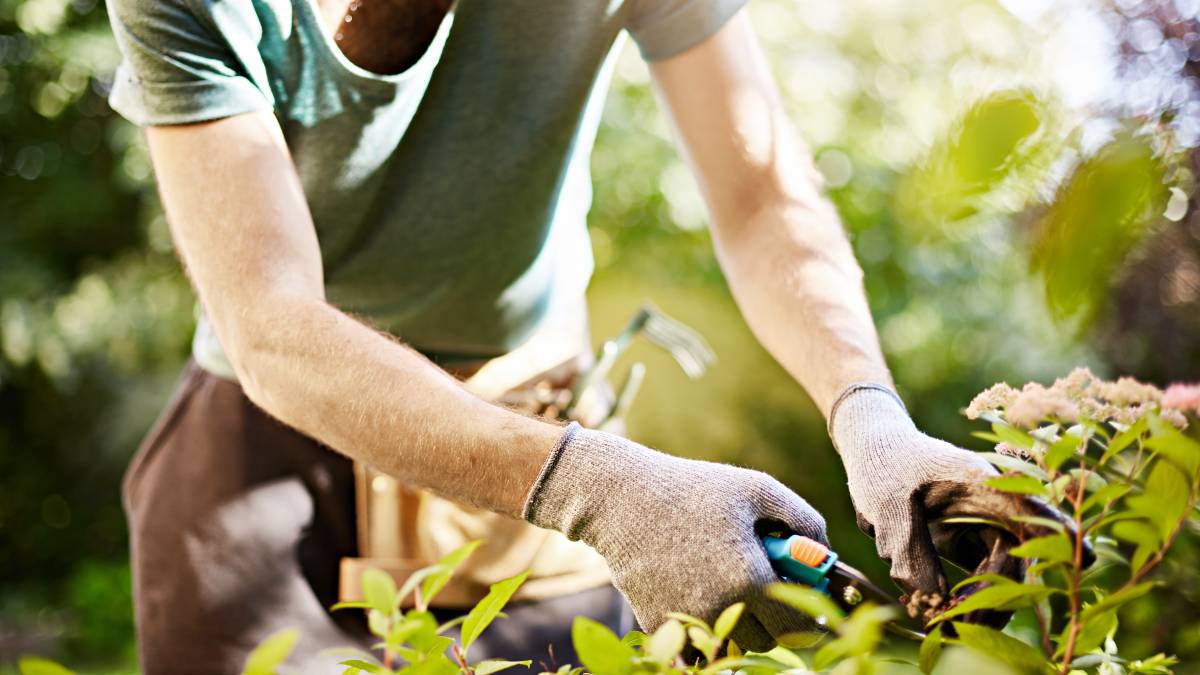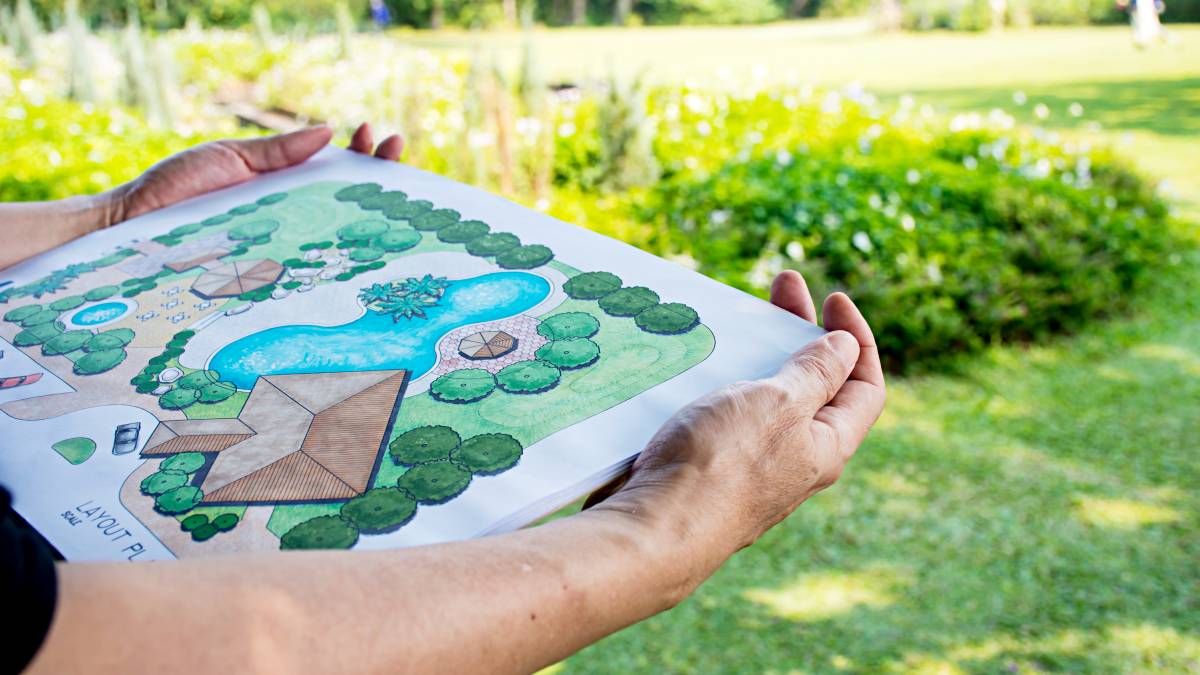- Home/
- Comparisons/
- Shrub & Bush Trimming/
- Pruning vs Trimming
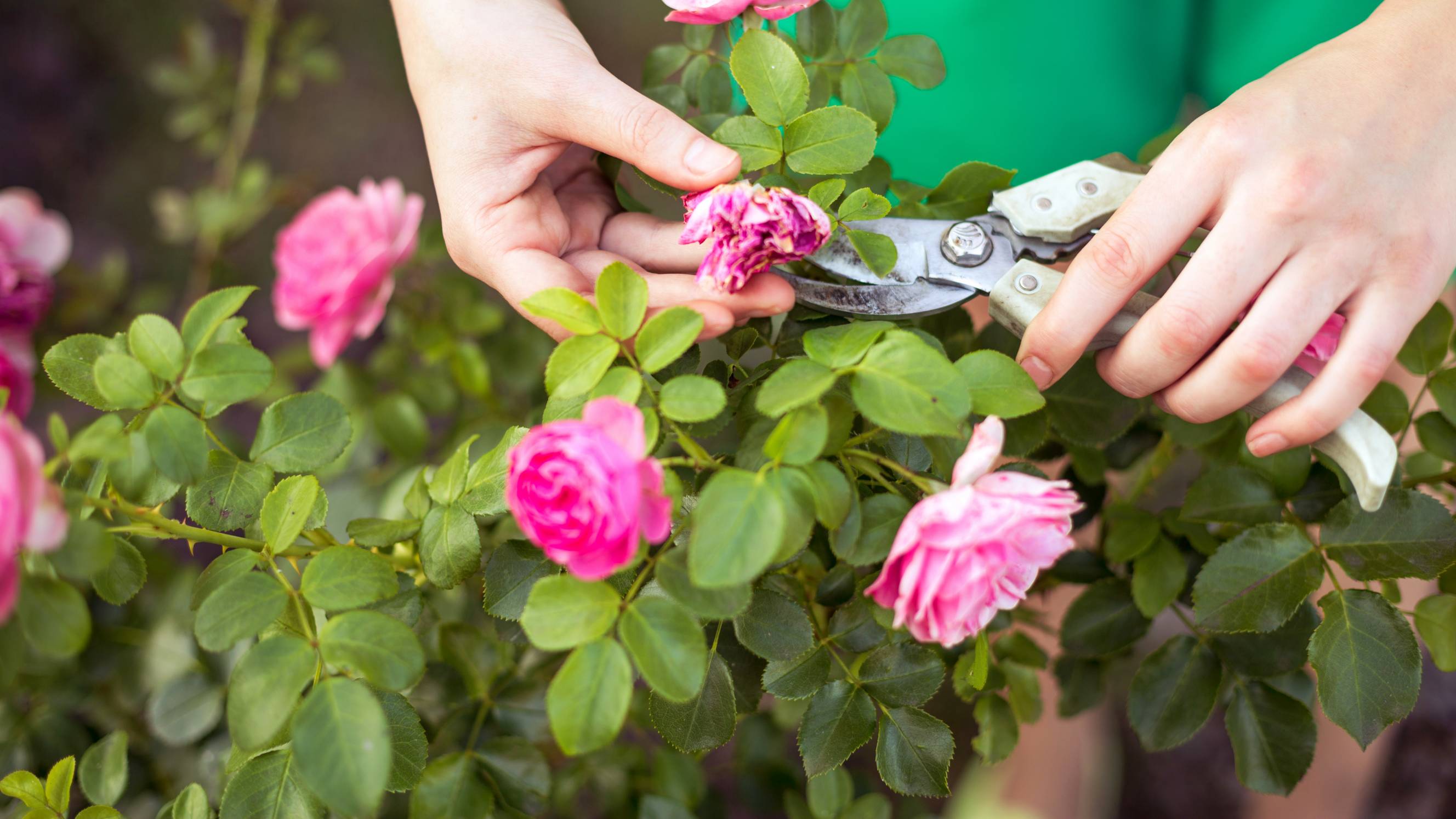
Pruning vs trimming: What are their key differences?
Comparing pruning and trimming based on purpose, required tools, and more
Hire a gardenerLast Updated on
Key Facts
- Pruning strategically removes specific branches, buds, and stems to improve plant health, promote newer or better growth, and control their shape and size.
- Trimming is lightly removing the tips of stems, branches, and spent flowers to retain the shape or height of plants. The primary goal is keeping them neat and beautiful rather than improving their health or growth.
What’s a garden maintenance checklist without proper hedge or tree management? A healthy garden means a more beautiful landscape, a higher property resale value, and even more privacy. But whether to trim or prune is a question that stumps many homeowners (no pun intended).
This pruning vs trimming guide compares two of the most common ways to maintain healthy plants or trees. It spells out their points of difference and informs you how much professional gardening services cost, whether you need to hire an arborist, and where to find a specialist.
If you’re ready to tackle those unhealthy tree branches and misshapen hedges, read on.
What is pruning?
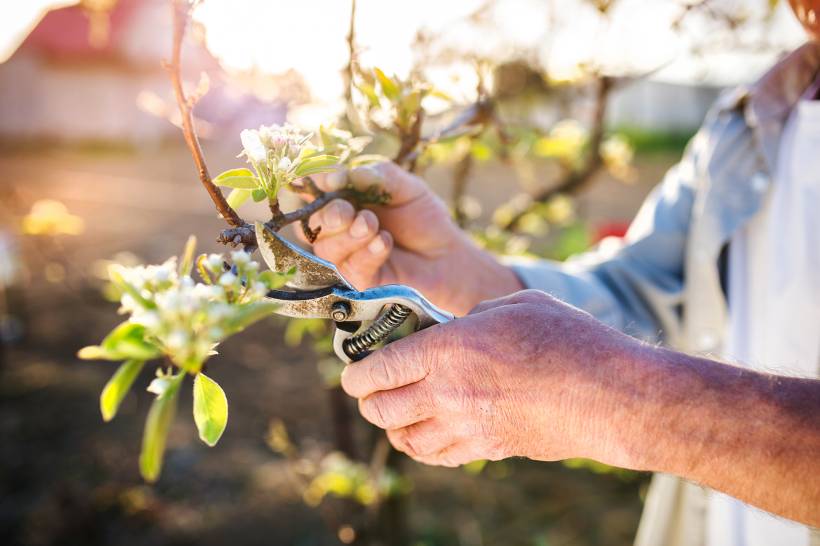
Pruning refers to the process of removing diseased and dead branches, buds, and stems from shrubs, hedges, and trees. The reasons for pruning range from improving the garden’s aesthetic to promoting excellent plant or tree growth.
For example, it increases fruit production by enhancing air circulation, preventing the risk of disease. It also strengthens the plant’s structure by removing excess branches that could rub against each other. Canopy lifting or crown raising widens the spaces between trees, allowing more sunlight to penetrate small branches, flowers, and leaves below.
When to prune depends on many factors, including plant species, health, and desired outcome. Young trees usually need pruning every two to three years, compared to three to five years for mature ones.
What is trimming?
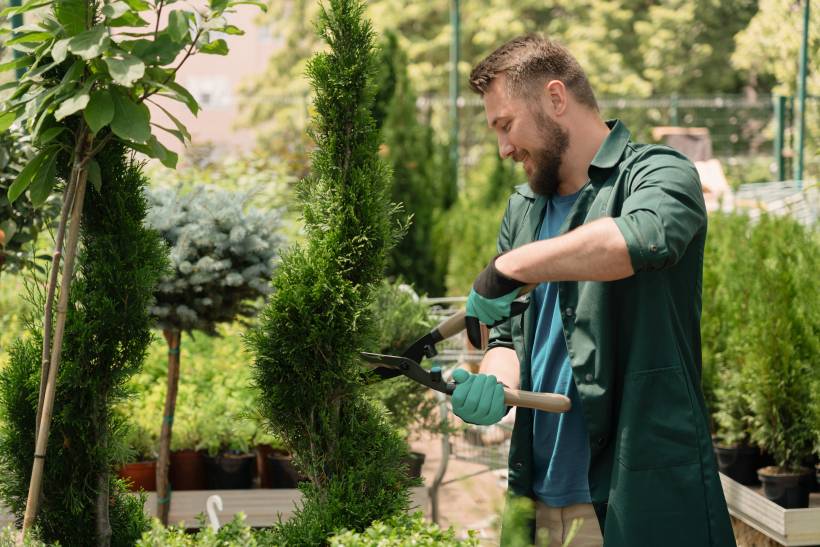
Trimming is less precise or extensive than pruning. Typically, it helps maintain the plant’s appearance, especially its size and shape. For example, regularly trimming hedges keeps them dense and within bounds.
The best time to trim usually coincides with the plant’s growth or flowering cycle, although it happens more frequently than pruning.
Trimming vs pruning: How are they different?
Should you trim a shrub bush or prune a tree? Knowing the difference between pruning and trimming can help you make better decisions about garden care. Compare these two methods below.
In terms of purpose
To prune trees or hedges is more comprehensive than to trim them. Besides improving their appearance, it maintains their health, especially their growth and structure. Pruning:
Removes damaged or diseased branches, flowers, and leaves to allow healthier parts to thrive.
Limits overgrown branches that might prevent sunlight from penetrating the leaves and flowers beneath the canopy.
Supports a young plant’s development by preventing misshapen growth or weaker branches.
On the other hand, trimming revolves around aesthetics. It keeps hedges and shrubs looking tidy, even, and defined. Trimming branches helps clear pathways or walkways, while pinching off flower heads encourages bushier or denser foliage.
In other words, trimming maintains the plant’s look, while pruning keeps it healthy.
In terms of required knowledge
Another significant pruning and trimming difference is the required knowledge. Usually, homeowners can manage with regular light trimming. These include removing dead or loose branches and flower heads of young trees and shearing some parts of shrubs and hedges for ‘touch-ups.’ These activities require only basic knowledge and equipment such as shears.
Because pruning is more complicated, a professional is essential. Hire a certified arborist when your trees need canopy cleaning or management of diseased branches and pest-infested plants. A gardener is a good choice for dealing with common issues.
In terms of essential tools
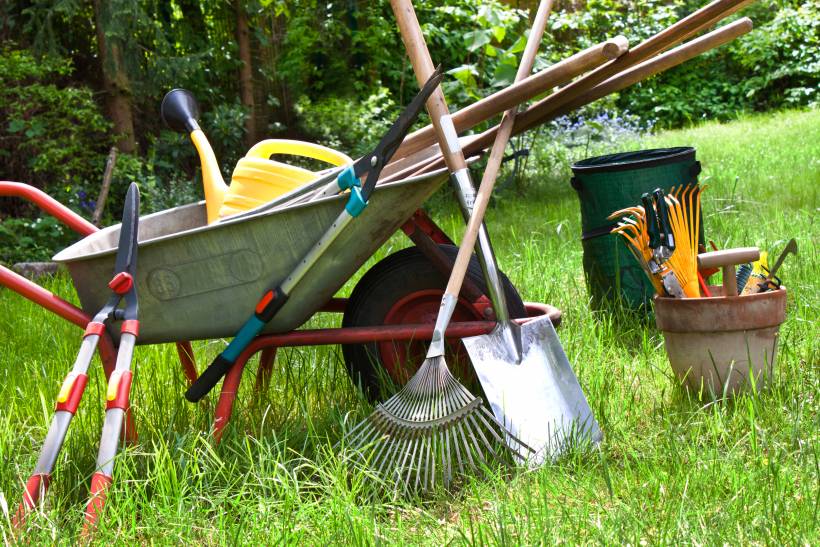
Pruning is usually hard work, requiring more specialised tools than trimming. These include pruning shears, which can create clean cuts on smaller branches. Lopping shears are excellent for cutting thicker parts of overgrown foliage, while pruning saws remove entire large branches.
Different shear types work for trimming. Hedge shears have long handles and wider blades to cut broad areas of foliage quickly, saving time and energy. A pair of hand shears has shorter blades to remove the tips of shrubs, flowers, hedges, and small branches.
Contrary to popular belief, most garden shears can still work well even when not razor-sharp. However, they need the right sharpening tool to maintain their effectiveness. Some of the cheapest options are sandpaper and aluminium foil. Duller shears might benefit from diamond stones, which are more expensive and challenging to use. When in doubt (or save yourself some money), let a gardener bring their tools.
In terms of cutting technique/severity
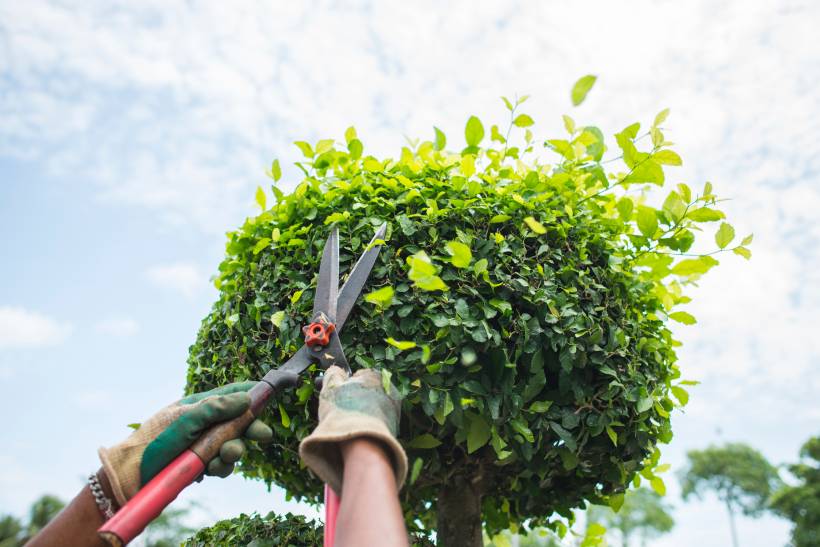
When comparing tree pruning vs trimming in terms of cutting techniques, think of pruning as doing surgery, which means it is more invasive, complex, or severe:
It involves removing specific plant parts, such as dead or diseased branches, flowers, and leaves.
Sometimes, it requires cutting at awkward angles.
It may entail getting rid of much foliage to stimulate the growth of newer and healthier plant parts.
Meanwhile, trimming is like getting a basic haircut. It usually involves repetitively snipping small amounts of plant material to retain its shape and enhance its appearance. It also cuts the tips of flowers to motivate a bushier growth.
The cutting technique also varies among plants, such as pruning vs trimming shrubs like roses. These woody perennials usually need light trimming at the tip of their branches to maintain their size and shape or deadheading to get rid of spent flowers and allow new buds to form and bloom. Pruning them by making thin or selective cuts promotes healthy growth and abundant flowering and minimises the risk of disease.
In terms of plant health impact
Both pruning and trimming raise healthy trees in different ways. For example, one of the pruning methods, crown thinning, removes smaller branches at the upper parts of a tree to prevent overcrowding or fungal infestation from dead or diseased branches. Although trimming is usually cosmetic, removing the branches’ tips indirectly stimulates the growth of new ones.
However, over-pruning and trimming also lead to problems. Consider pollarding, a pruning technique that significantly limits the tree’s growth to avoid letting it touch electric wires or cover buildings and traffic signs. When done improperly, it leaves significant wounds, contributing to decay and disease. For this reason, an arborist performs crown restoration to reduce the damage.
Over-trimming can cause plant stress, decreasing its vigour. Removing excessive foliage also results in poor plant photosynthesis.
In terms of timing and frequency
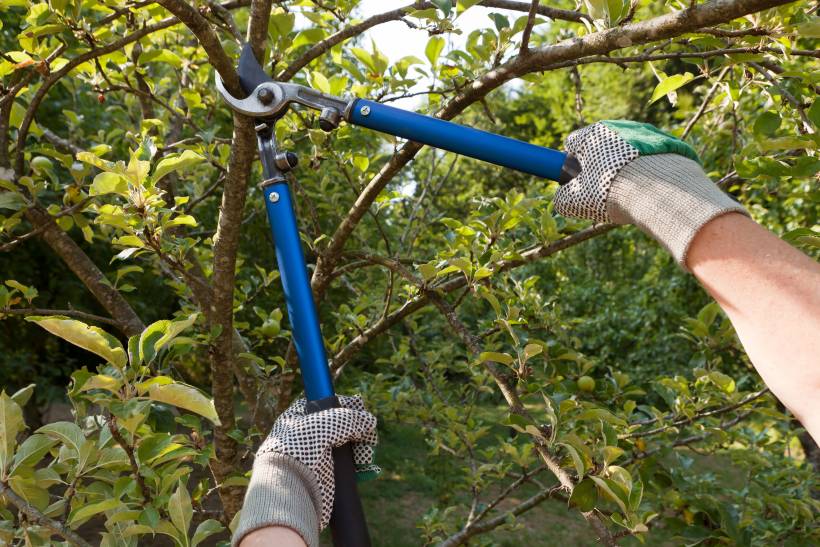
When is the best time to prune or trim hedges and other plants? It depends on many factors, such as tree species, seasons, and conditions. Diseased branches, flowers, and leaves need urgent attention (more likely pruning than trimming).
Other than this:
Do not prune newly planted trees, as they are still building and strengthening their roots. If you need to, limit it to only removing unhealthy branches.
Prune younger trees every two to three years. Widen the interval as they mature.
Remove thicker, diseased branches of dormant trees during early spring to encourage the proper growth of new leaves and flowers.
Some plants can tolerate late-fall pruning, but the best time is late winter to early spring.
Time the pruning after most spring flowering trees bloom so that the following year’s buds are less likely to fall.
Prune shrubs such as crape myrtle in the early spring or late winter before you see new growth.
Many plants can benefit from both trimming and pruning. For example, pruning a hedge is ideal during its first two to three years or until it reaches your desired height. The process helps spot diseases that might spread quickly. Once you are happy with the result, you can do trimming once a year, although some plants might need more.
In terms of service cost
Trim vs prune costs significantly vary because of many factors. These include location, project complexity, and urgency. Usually, it is around $35 an hour in Australia, but the entire project can range from $200 to $2,000.
For example, tree pruning services might be over $400 for a small tree and at least $1,000 for 15-metre plants with several unhealthy branches.
Tree trimming services are commonly cheaper because of the shallow work they entail. Cutting a hedge can be as low as $100 for a 175-square-metre yard or $1,500 for tall ones. Maintaining the plants regularly keeps them healthy and lowers service costs.
Achieve careful pruning or trimming with Airtasker
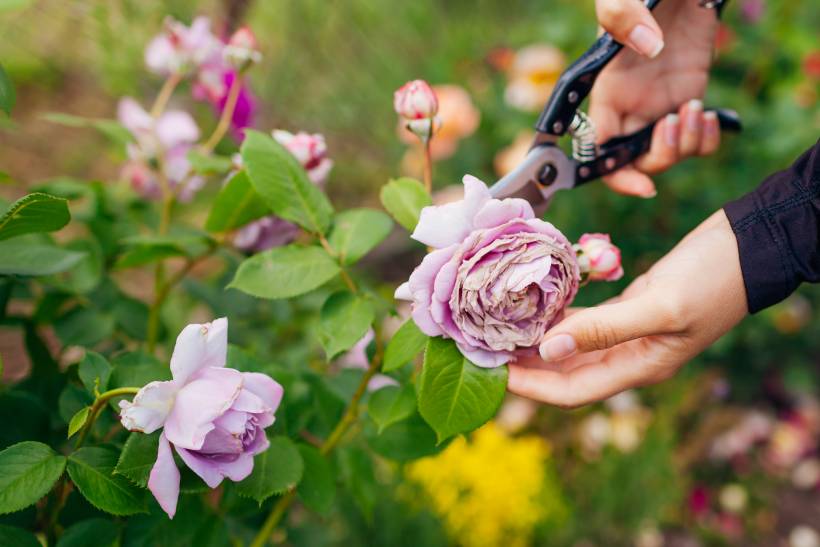
Ultimately, can you prune or trim a tree by yourself? Yes, with so many tools and equipment available in hardware stores. However, it’s not always advisable in specific conditions, such as when dealing with thicker branches, diseased shrubs and hedges, or incredibly tall trees.
Consider hiring a professional if you want more than removing unnecessary branches and wish to improve your home’s general landscaping. You can find the right gardener or landscaper for the job by following these steps:
Go to the website and click ‘Post your task for free.’
Create a title for the post, such as ‘Trim my rose bush’ or ‘Looking for Sydney landscaper.’
Determine the date for the job. It can be specific or flexible.
Provide other details, such as the condition of your plants and trees and whether you need hedge trimming and pruning.
Set a budget.
Publish the task and wait for proposals. Compare quotes, profiles, and ratings to choose the best Tasker.
Pruning vs trimming
| Pruning |
Trimming |
|
|
Purpose |
Maintain or improve plant health |
Maintain or improve plant aesthetics |
|
Required Knowledge |
May require a certified arborist to handle complex tasks, like crown cleaning or raising |
May entail gardeners and landscapers for tall or severely misshapen hedges and shrubs |
|
Essential Tools |
Sometimes requires heavy-duty tools |
Usually necessitates standard shears |
|
Cutting Technique |
More severe and may involve cutting in awkward angles |
Shallow, with cuts only at the tips of branches or stems |
|
Plant Health Impact |
Removes diseased or dead branches and stems for newer or better growth Can lead to disease or decay when overdone |
Creates denser foliage and limits a hedge’s growth within bounds May stress plants when performed too often |
|
Timing & Frequency |
Done strategically based on the plant species and its blooming cycle Typically once a year for established plants |
More flexible, often done during the growing season to encourage bushier growth Generally twice a year, with at least one trim after flowering |
|
Service Cost |
Costlier than trimming because of task complexity |
Cheaper but can be pricey for taller hedges |
FAQs on pruning and trimming
Fruit trees benefit from pruning while they are still dormant because branch patterns are more apparent and wounds have more time to heal. This is between late winter and early spring before fruiting begins. However, the exact timing slightly varies per plant. For instance, pruning an apple tree can be a bit later than a cherry tree because the latter blossoms earlier.
Yes, but it depends on the evergreen or deciduous plant. Because deciduous species grow quicker, they might need more trimming in a year than evergreens. However, both can benefit from light trimming before new growth appears, such as in the late winter to early spring.
Yes, when done correctly, they can help plant species thrive. For example, tree trimming and pruning prevent diseased branches from growing and spreading infections and raise crowns to allow enough sunlight to nourish younger and smaller plants. They also contribute to bushier or denser growth that serves as protective habitats for insects.
Find shrub & bush trimming specialists, fast
Post a task
Related articles
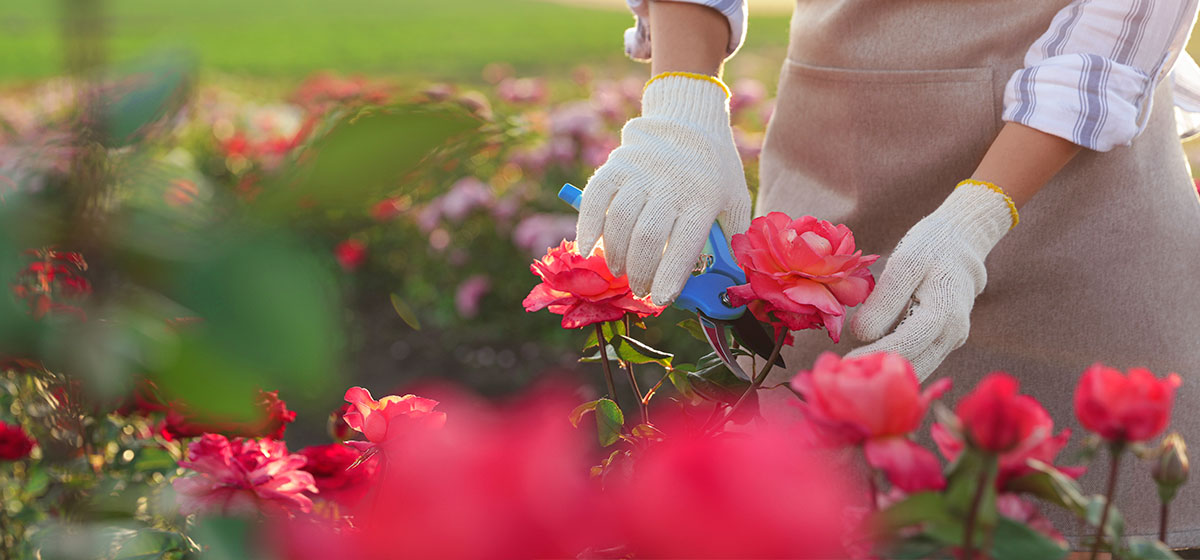
How to prune roses the right way
Read more
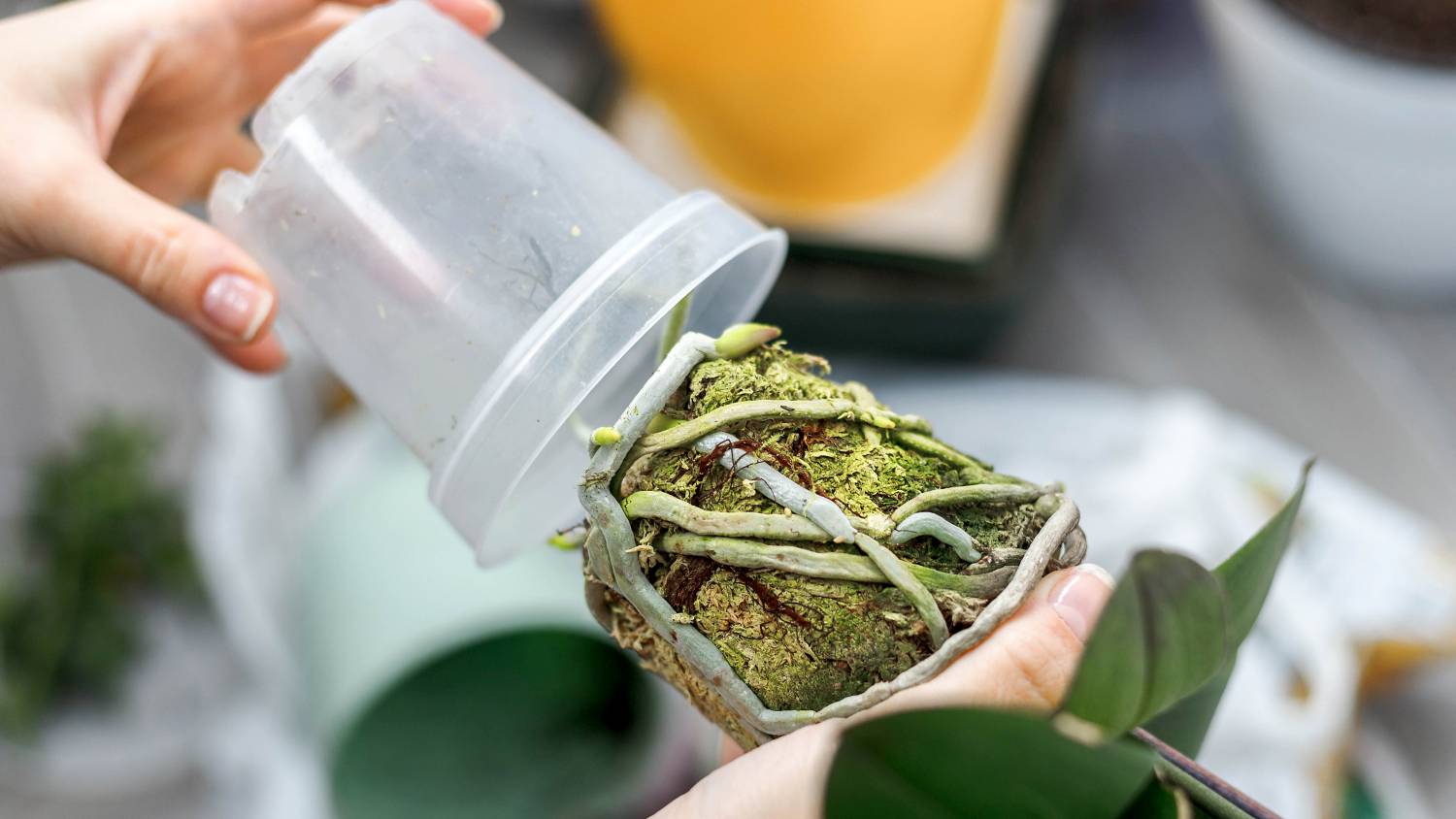
Learn how to repot an orchid
Read more
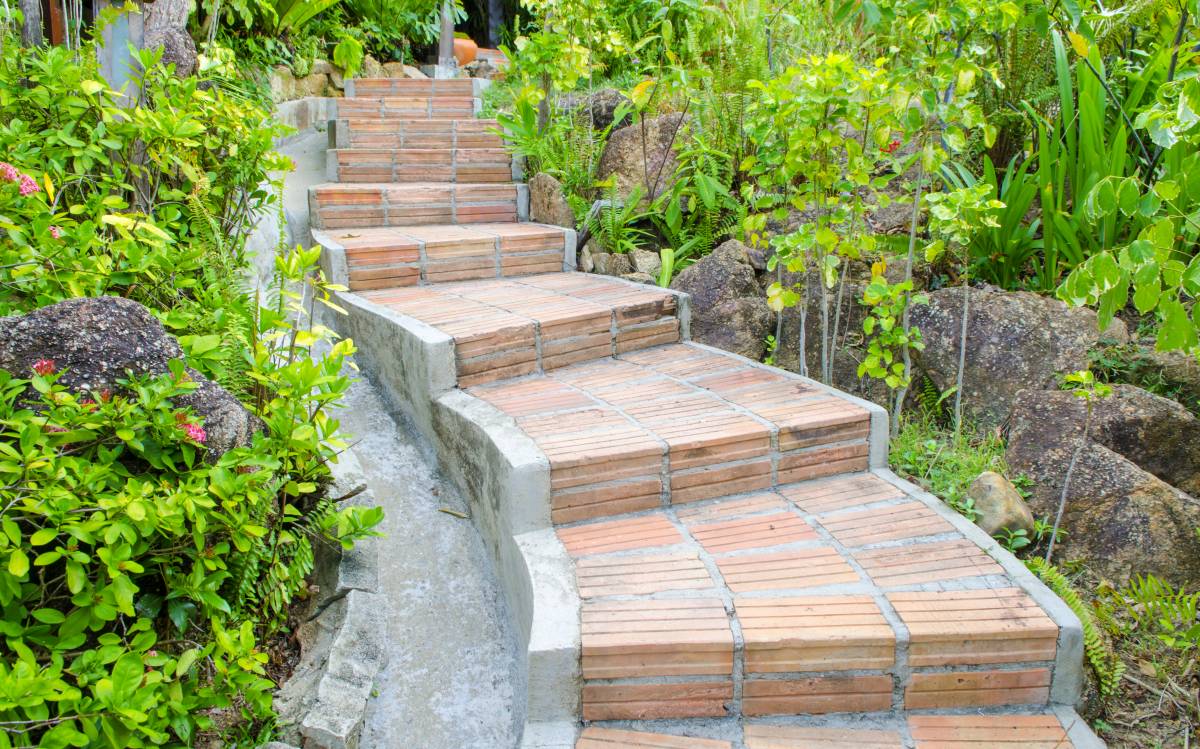
How to build garden steps
Read more
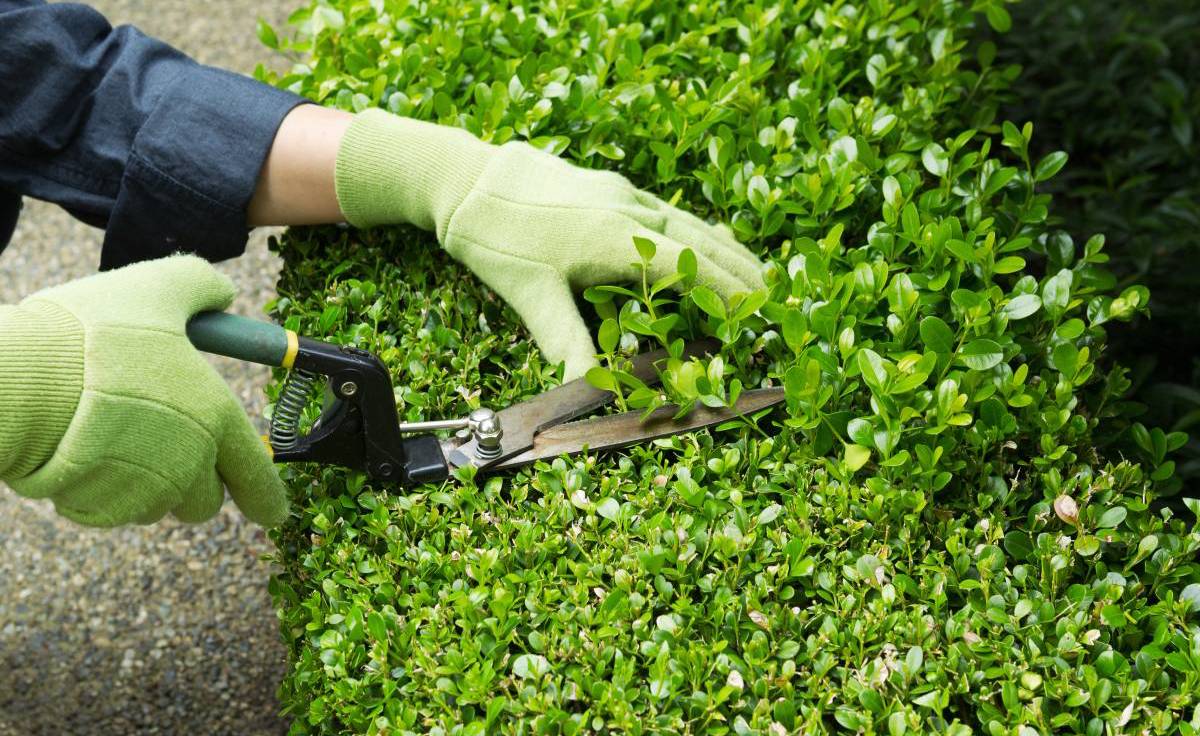
How to trim bushes the right way
Read more

13 best spring gardening tips
Read more

25 ways to make money gardening
Read more
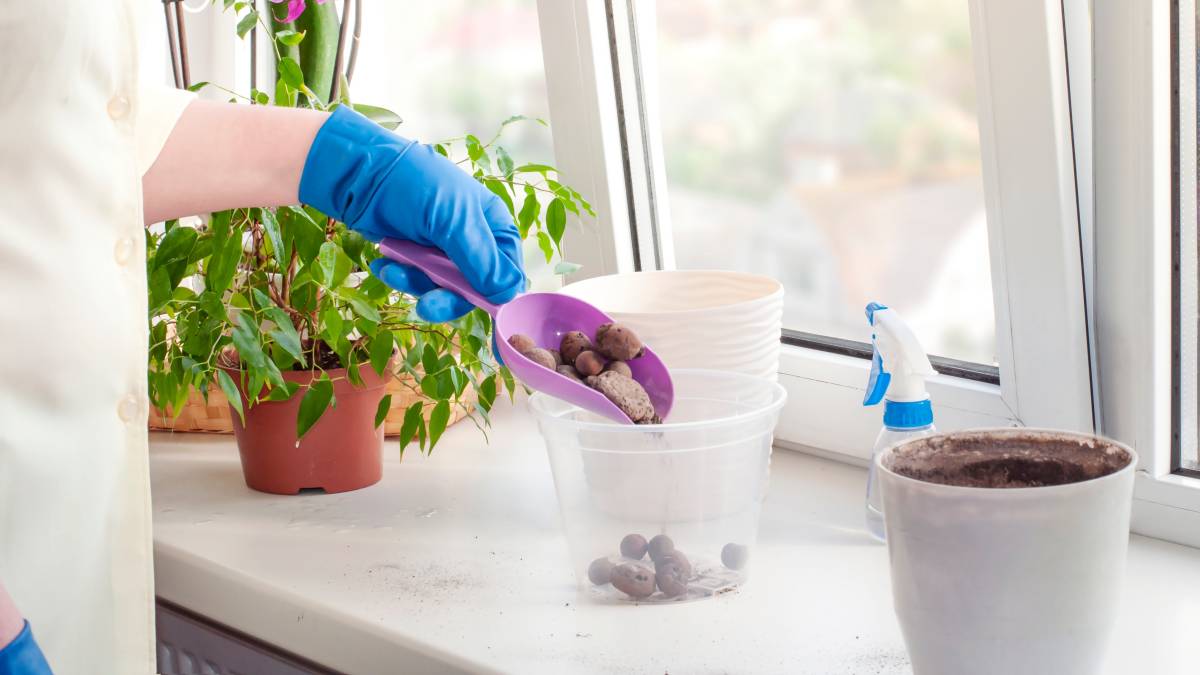
36 Quirky plant pot ideas you’ll love
Read more
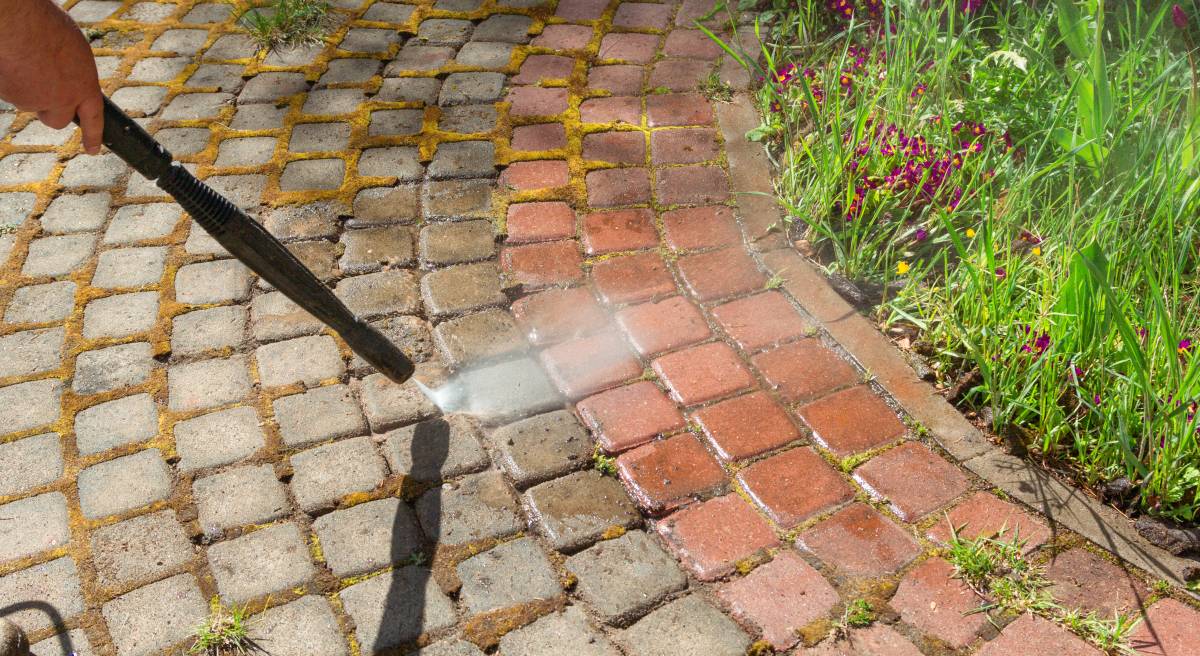
How to clean garden rocks
Read more
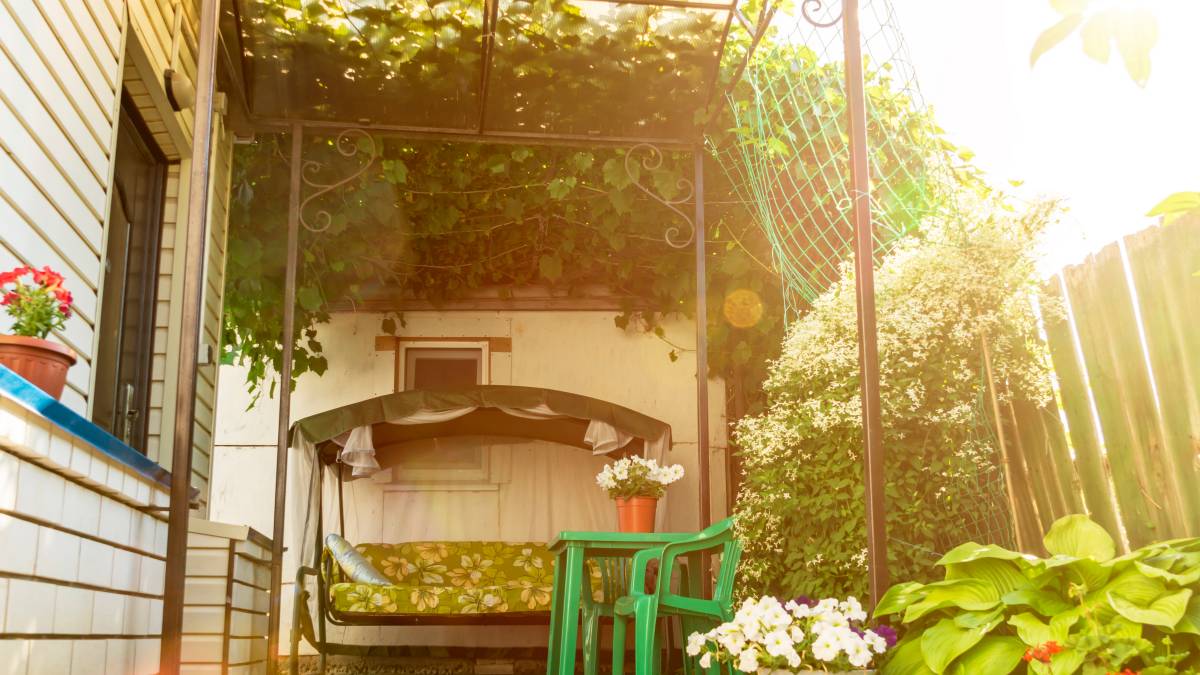
18 Garden canopy ideas you’ll love
Read more
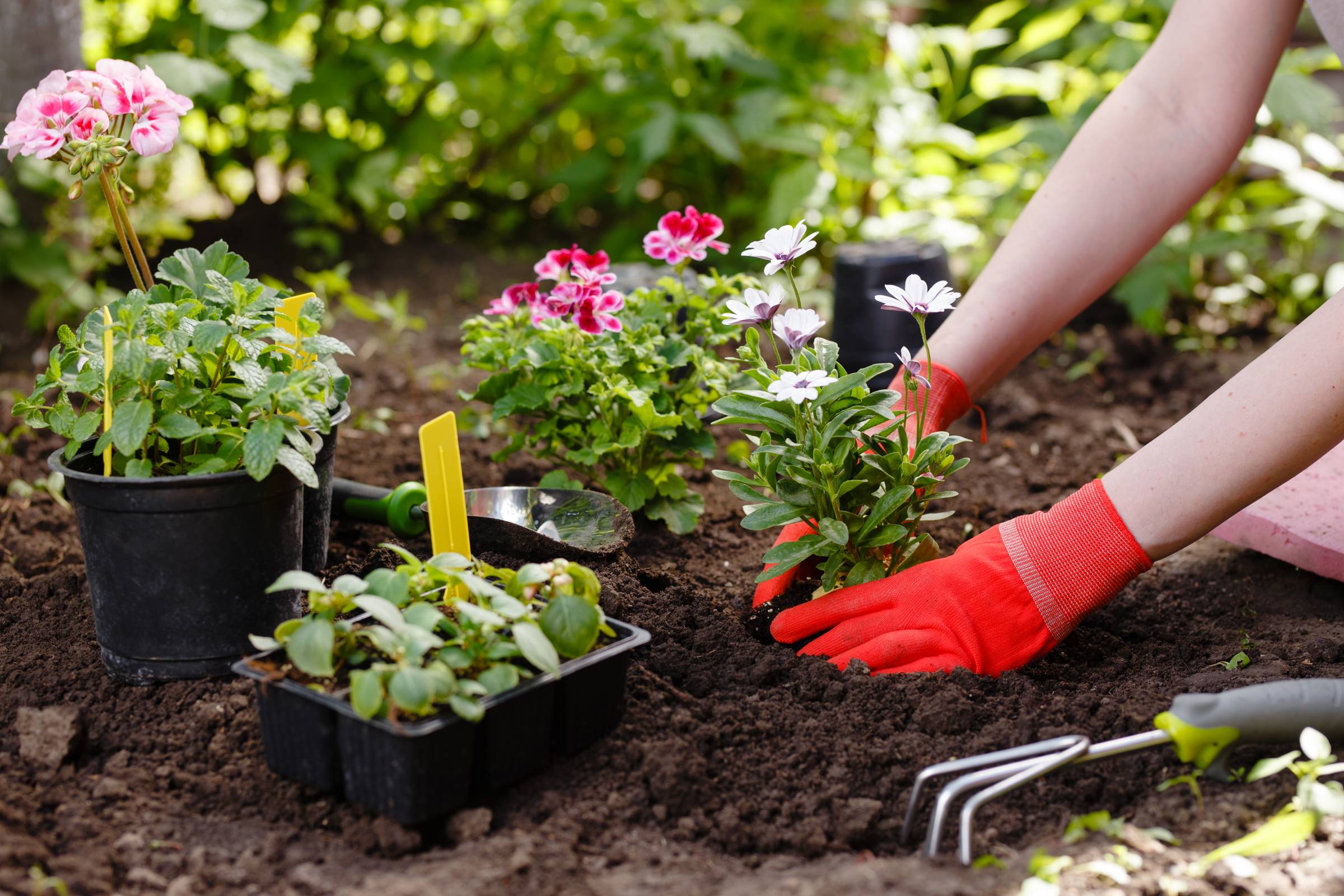
Your garden maintenance checklist
Read more
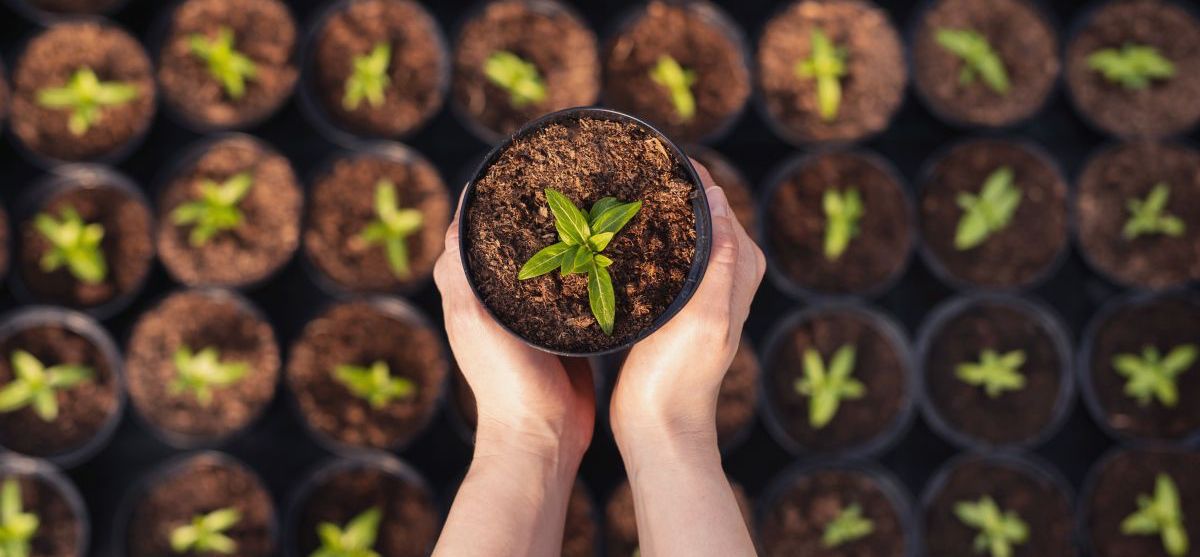
Gardening tips for beginners
Read more
Related price guides

How much does a garden room cost?
Read more
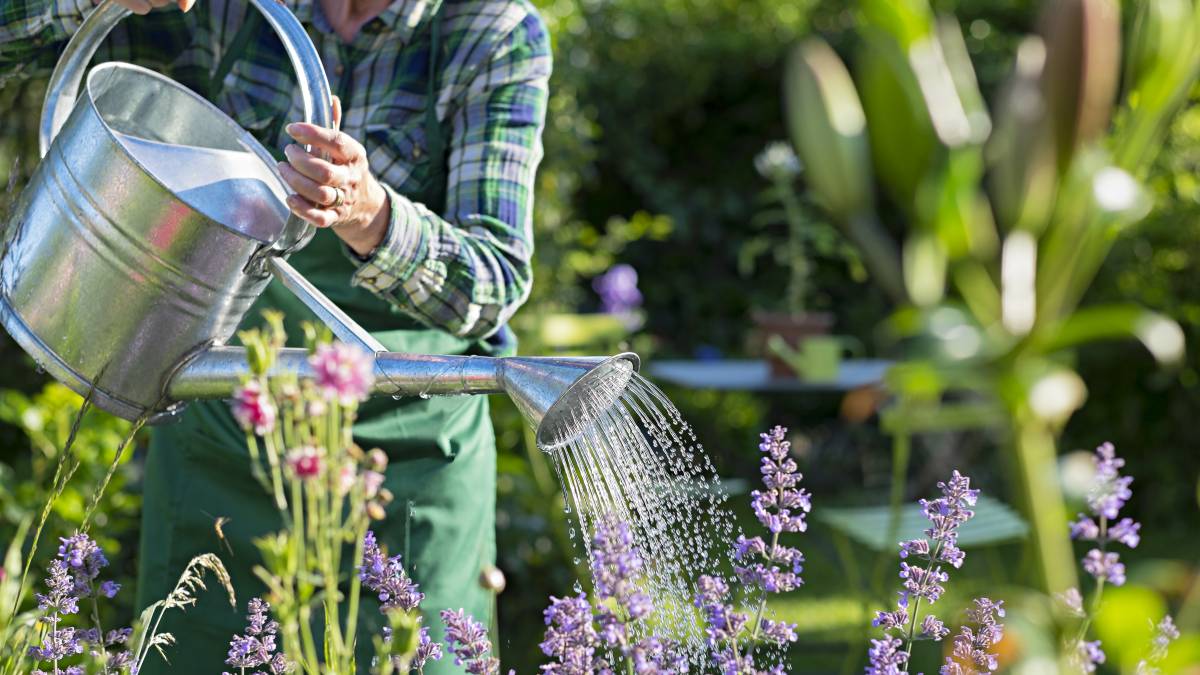
How much does a gardener cost?
Read more
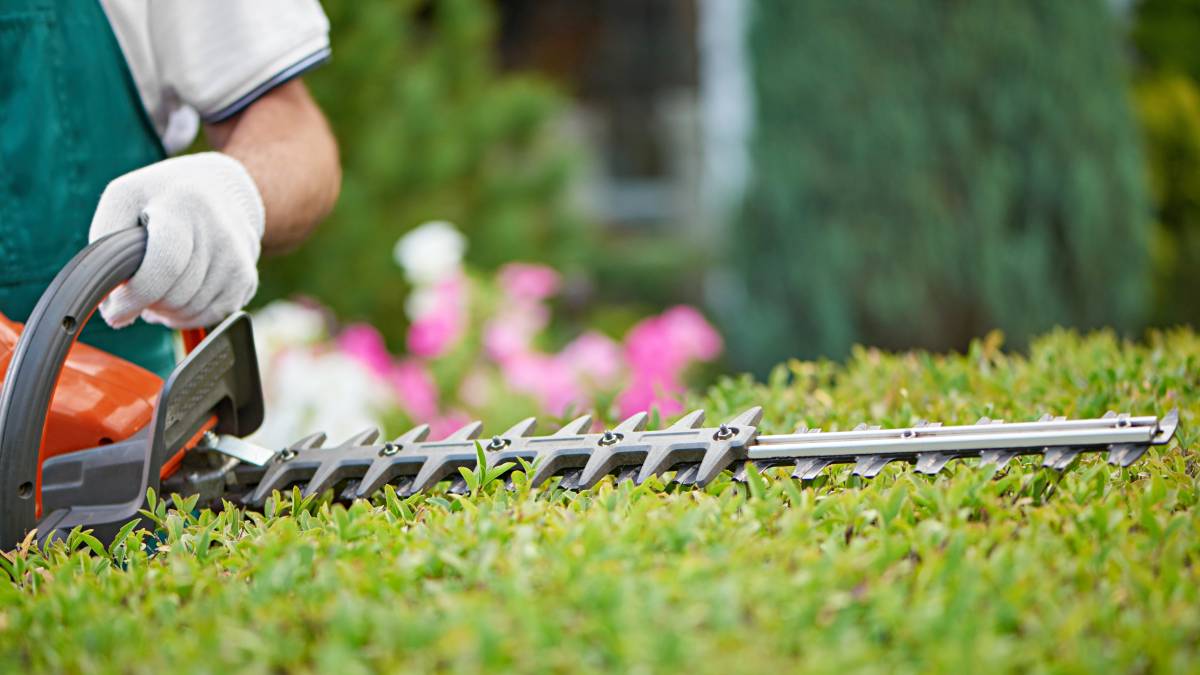
How much does hedge removal cost?
Read more
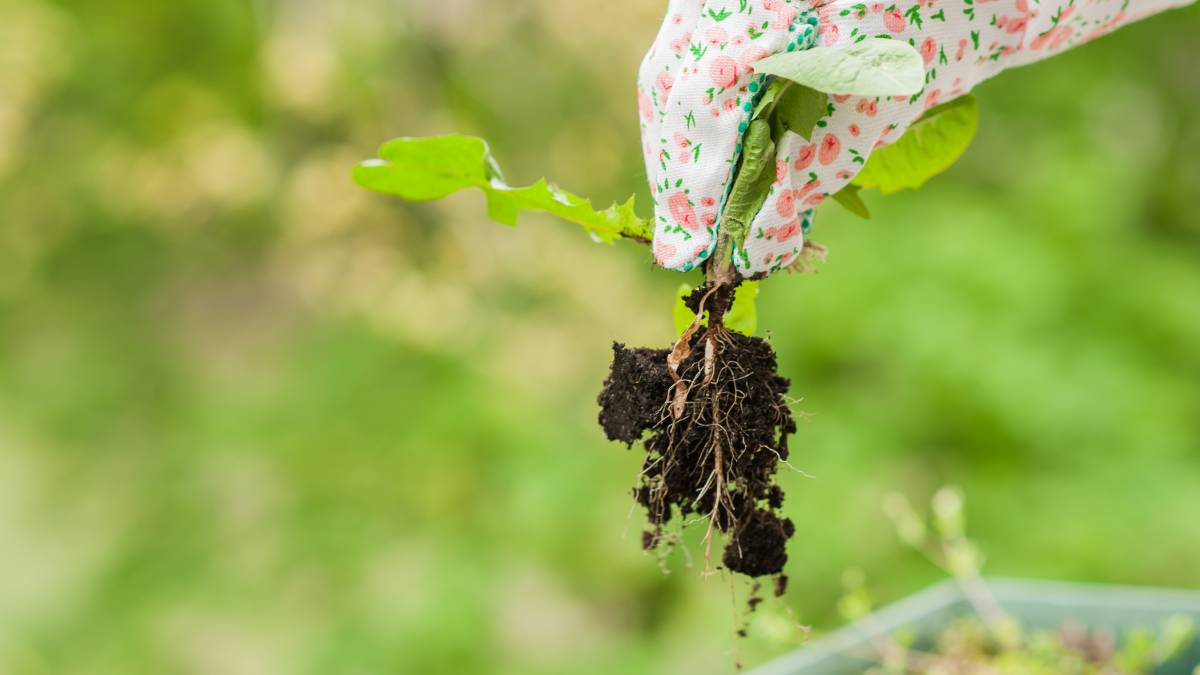
How much does weeding cost?
Read more
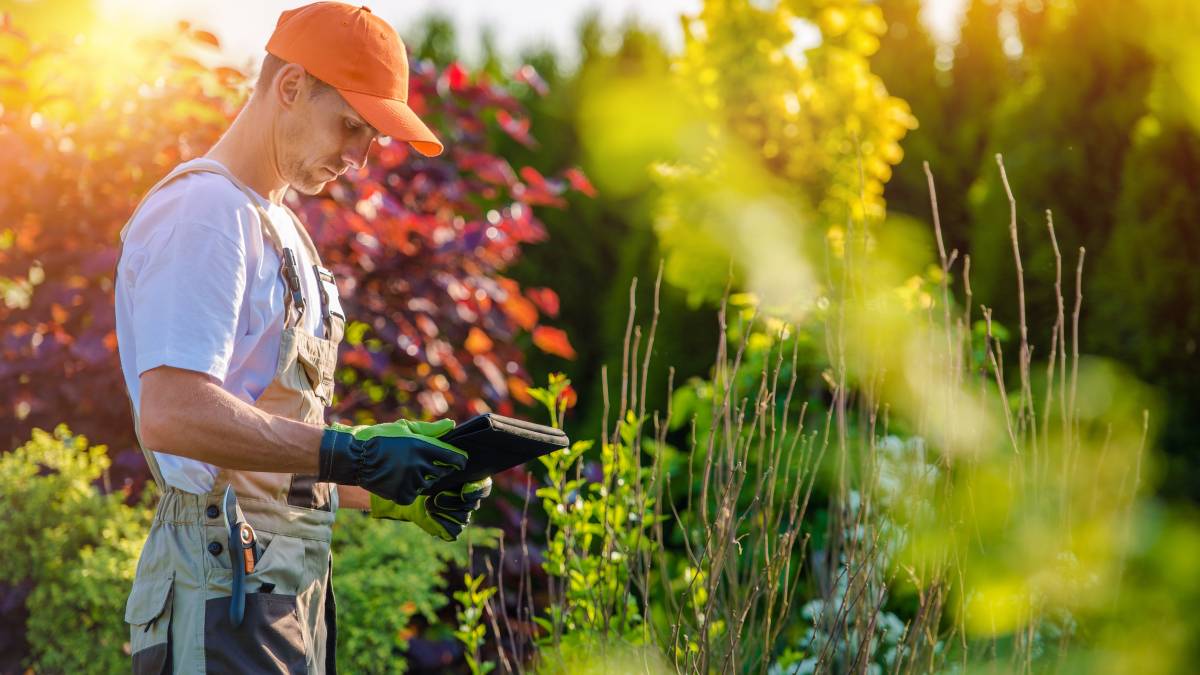
How much does garden clearance cost?
Read more
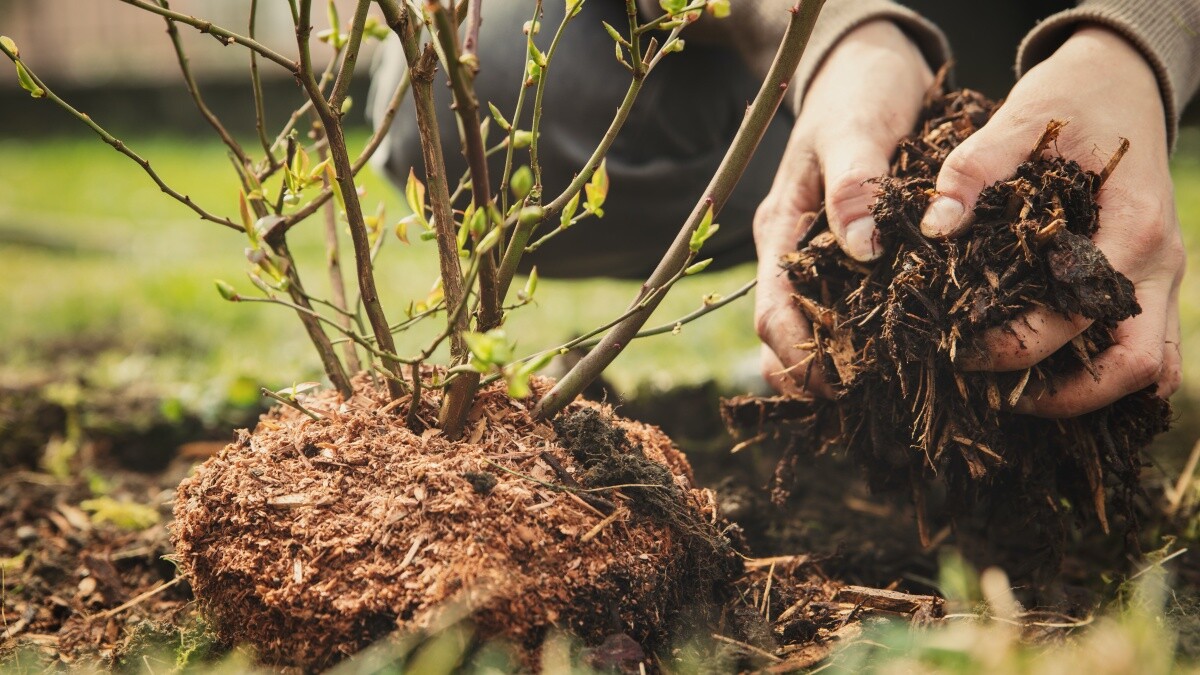
How much does mulch cost?
Read more
